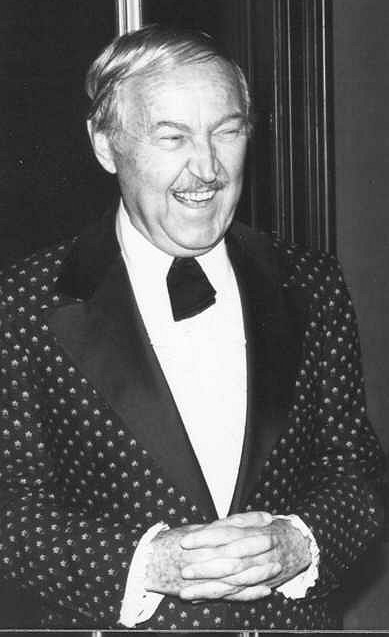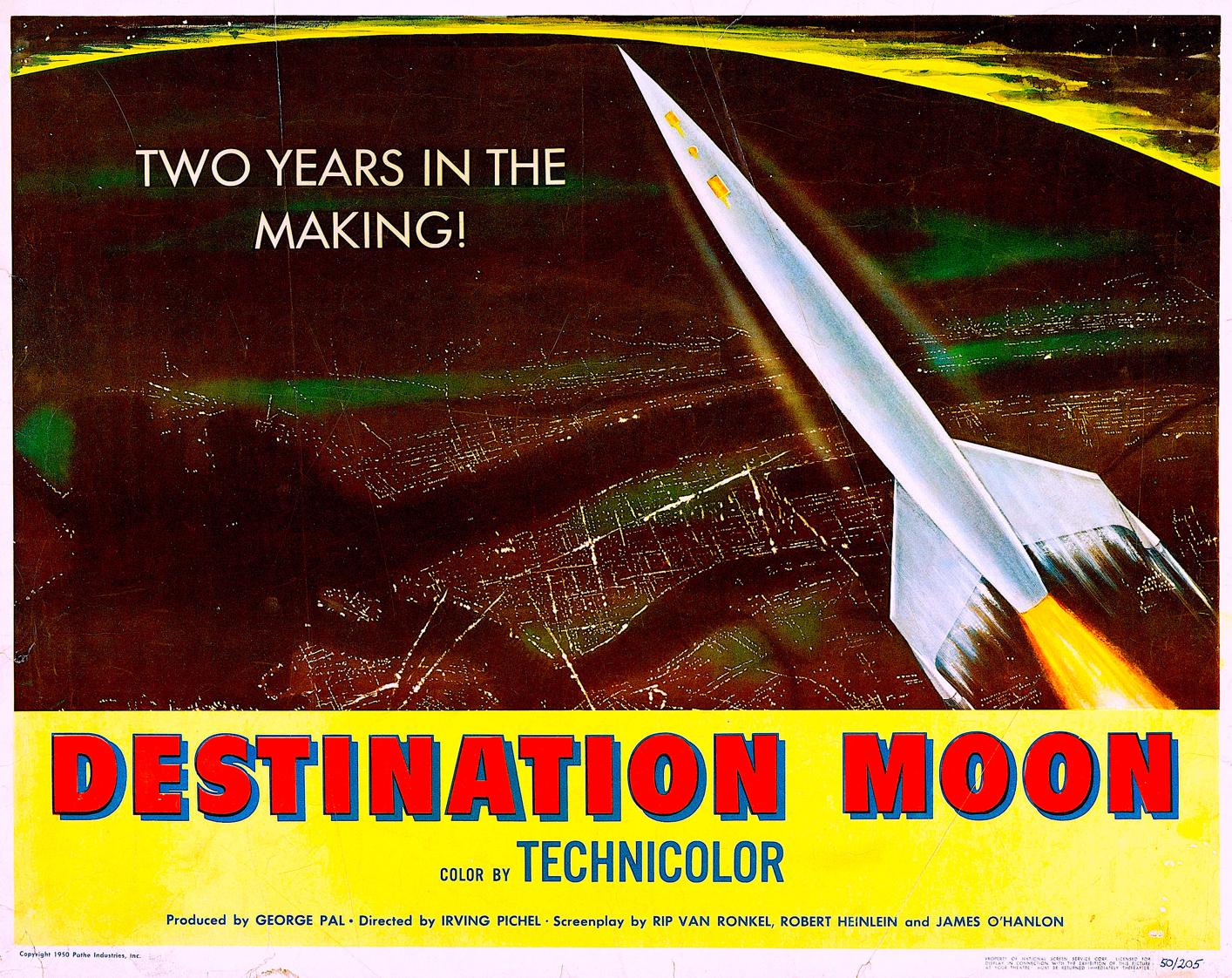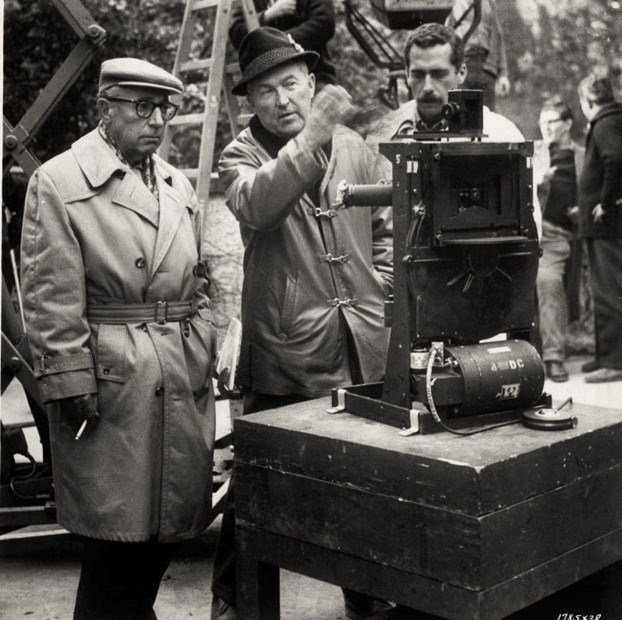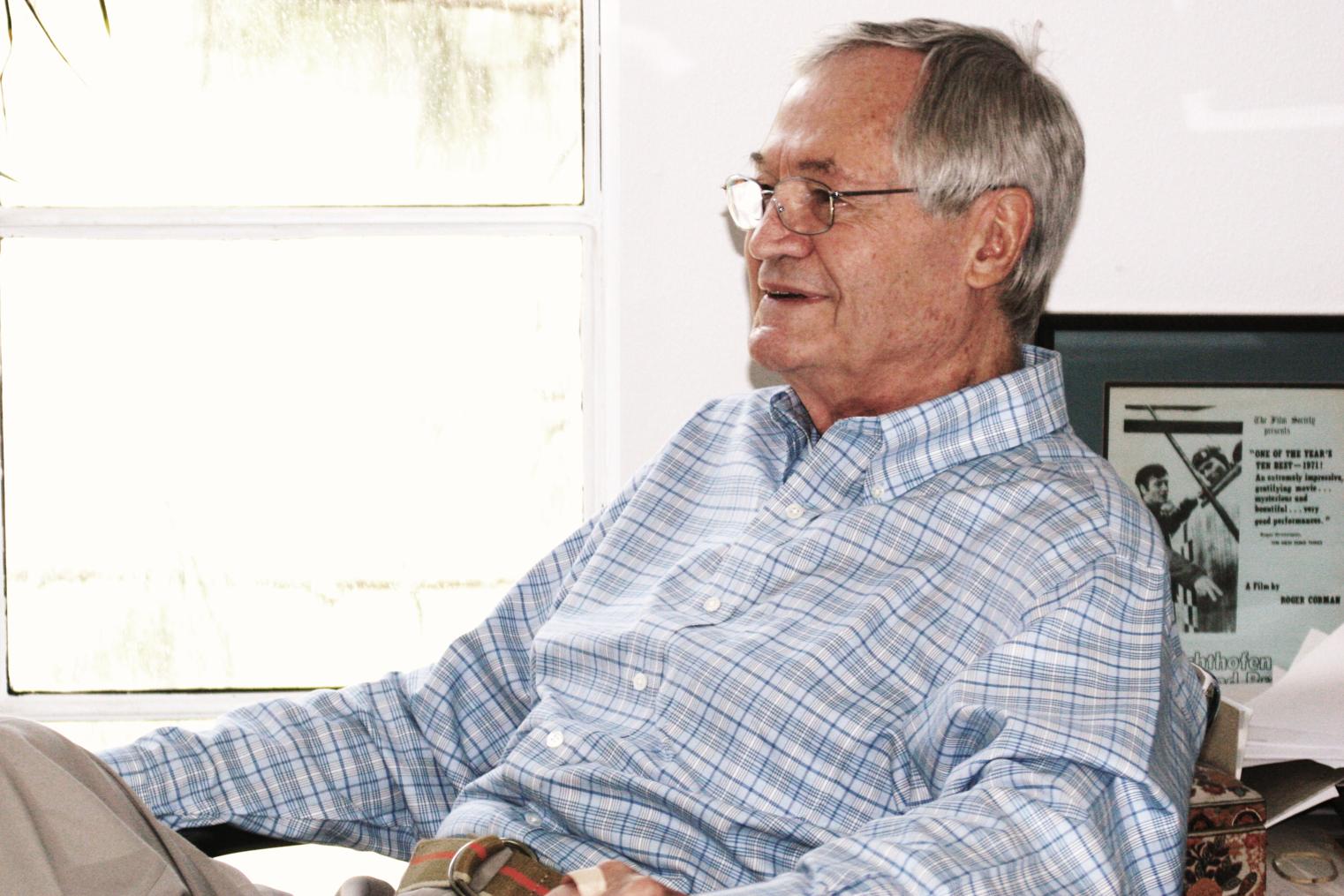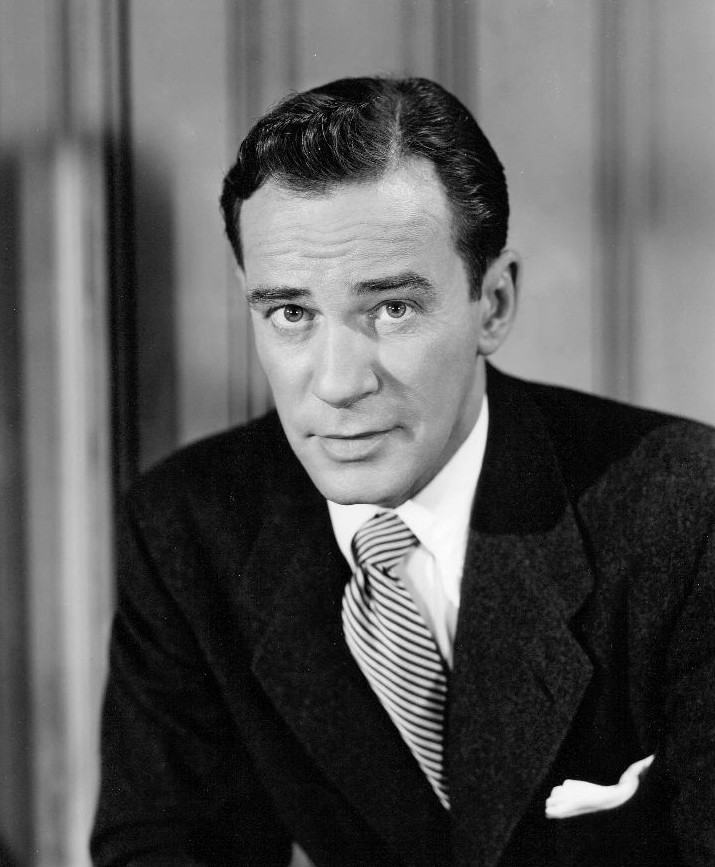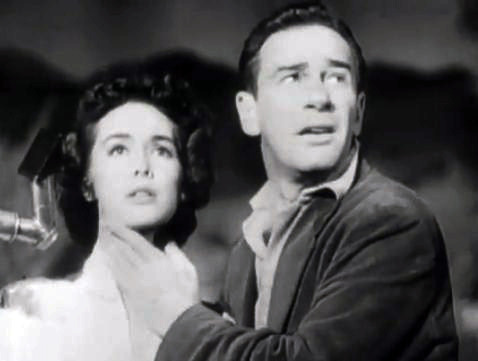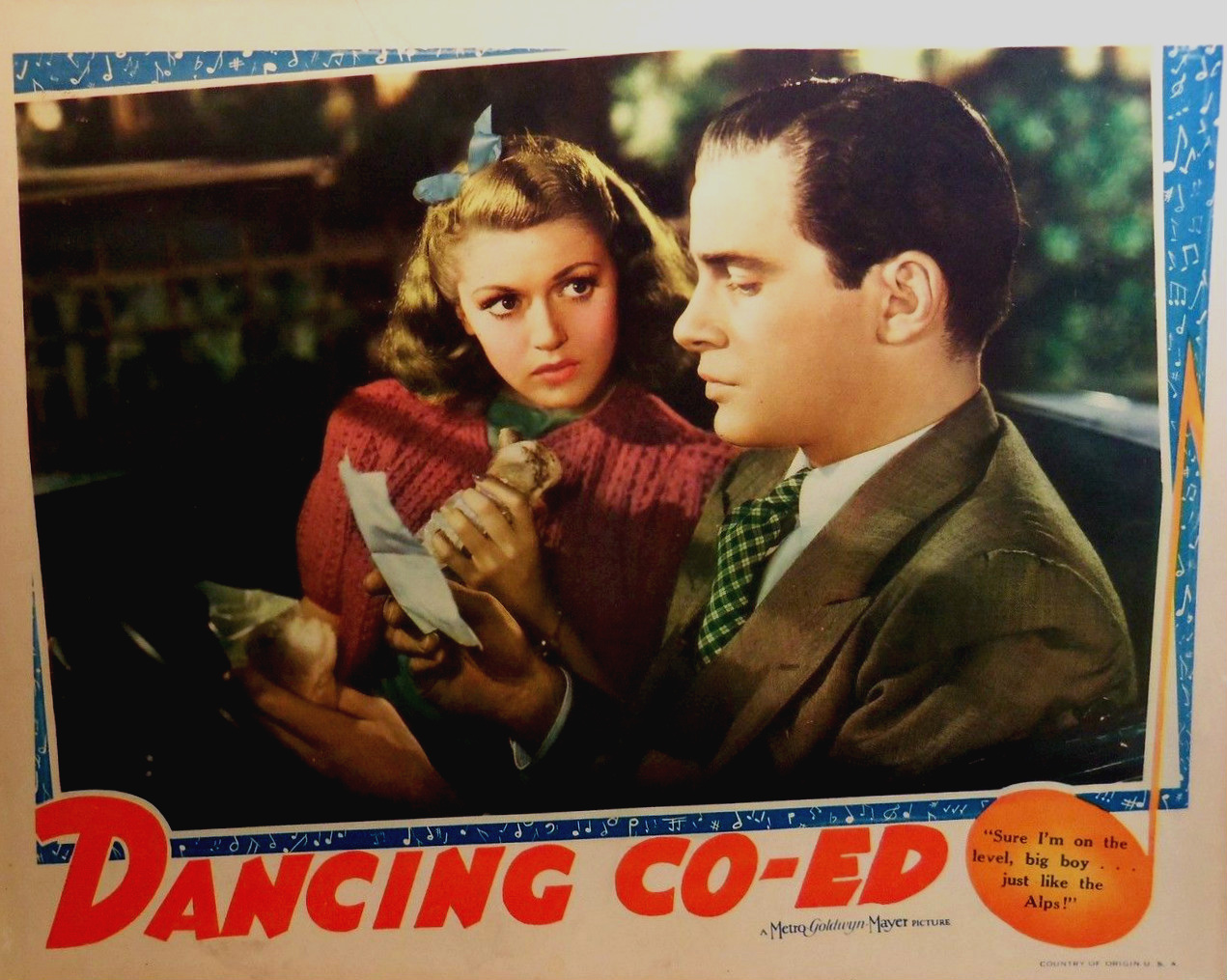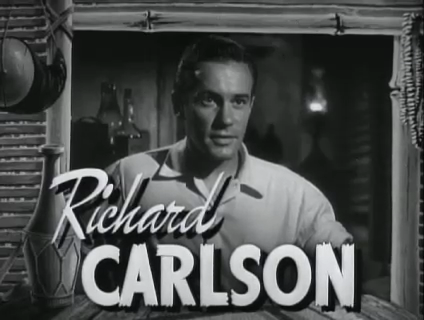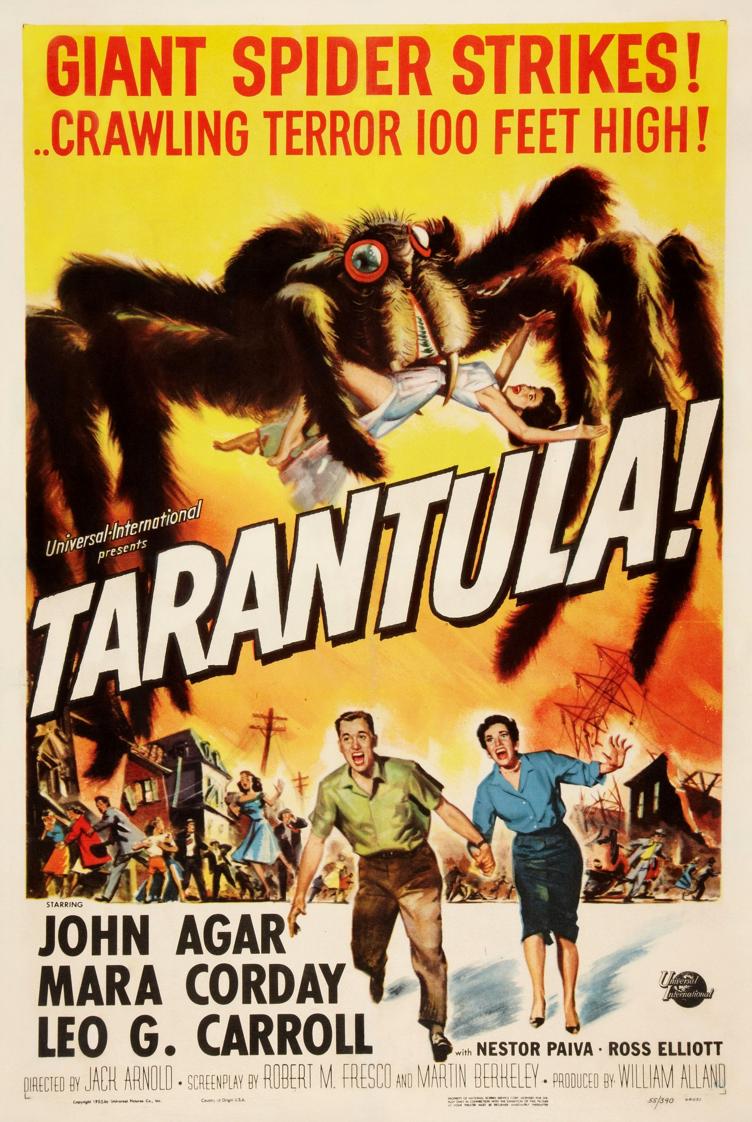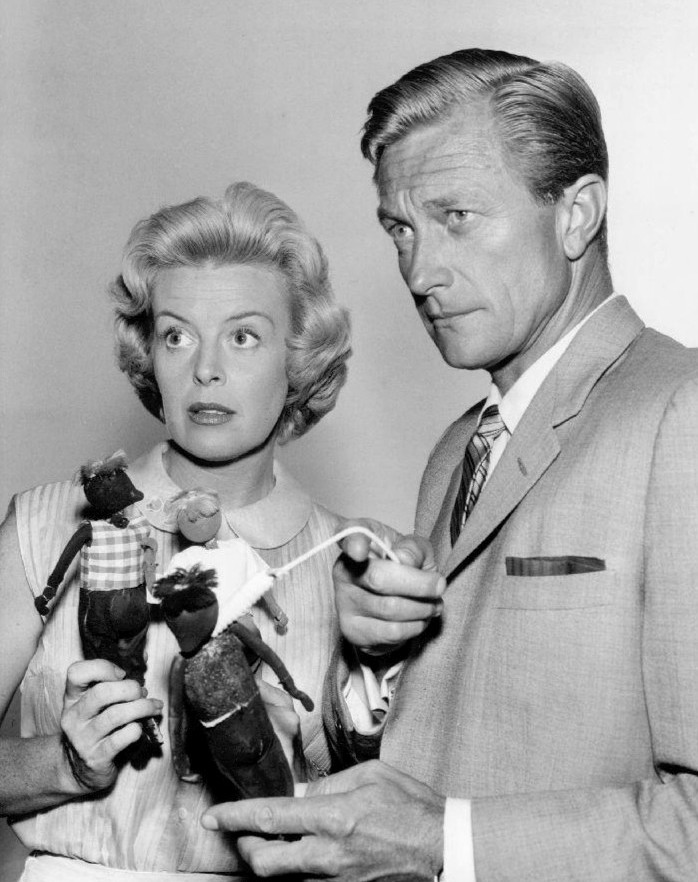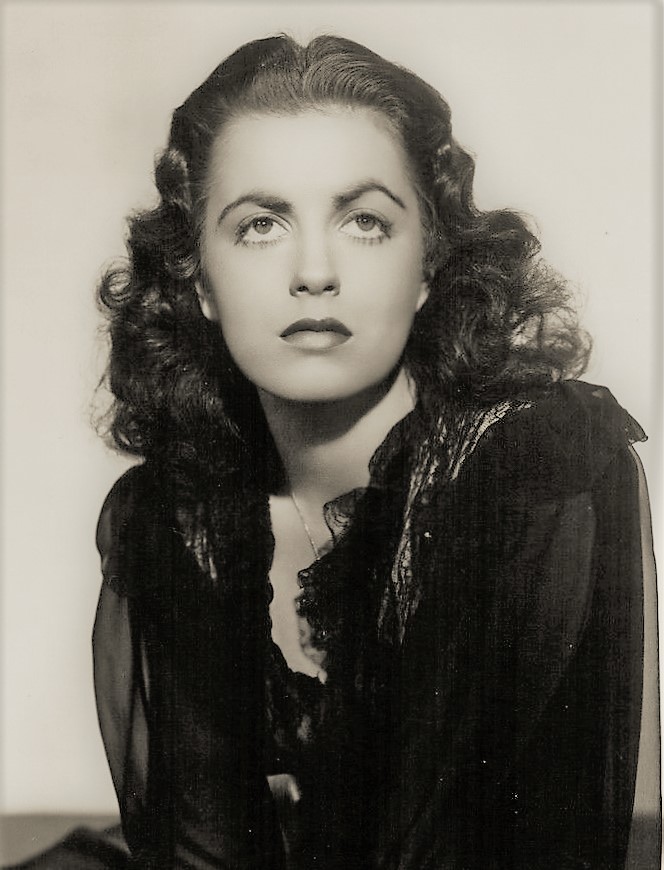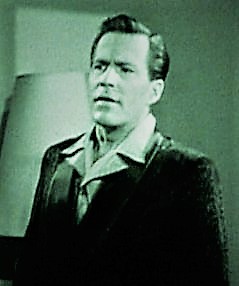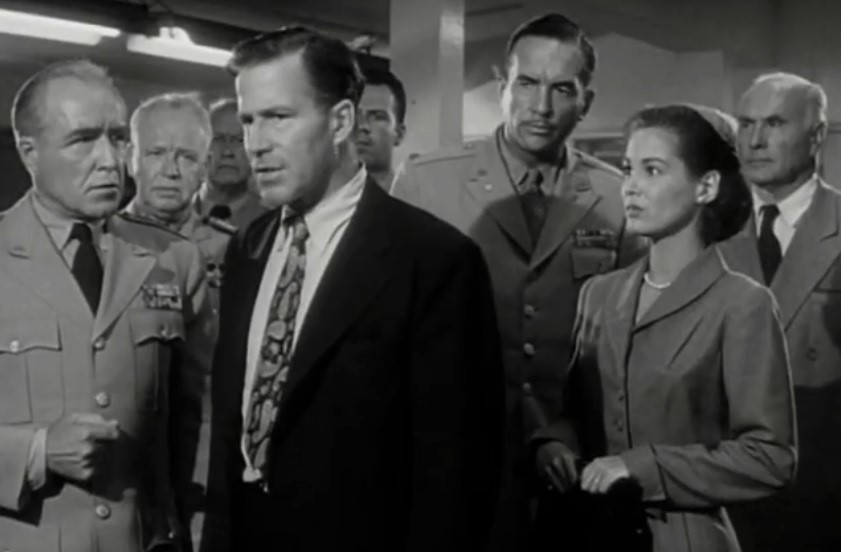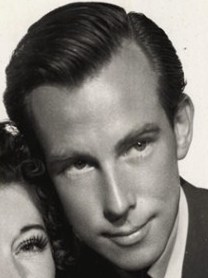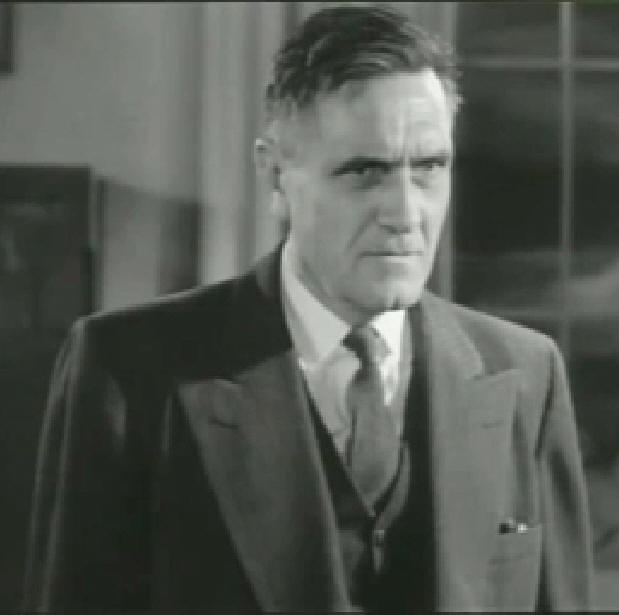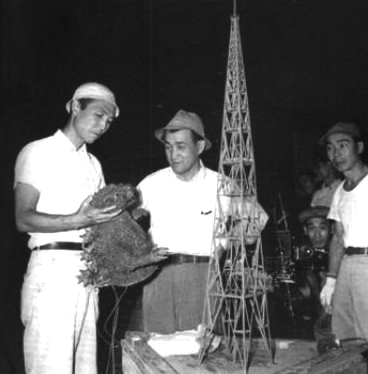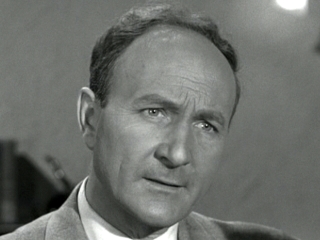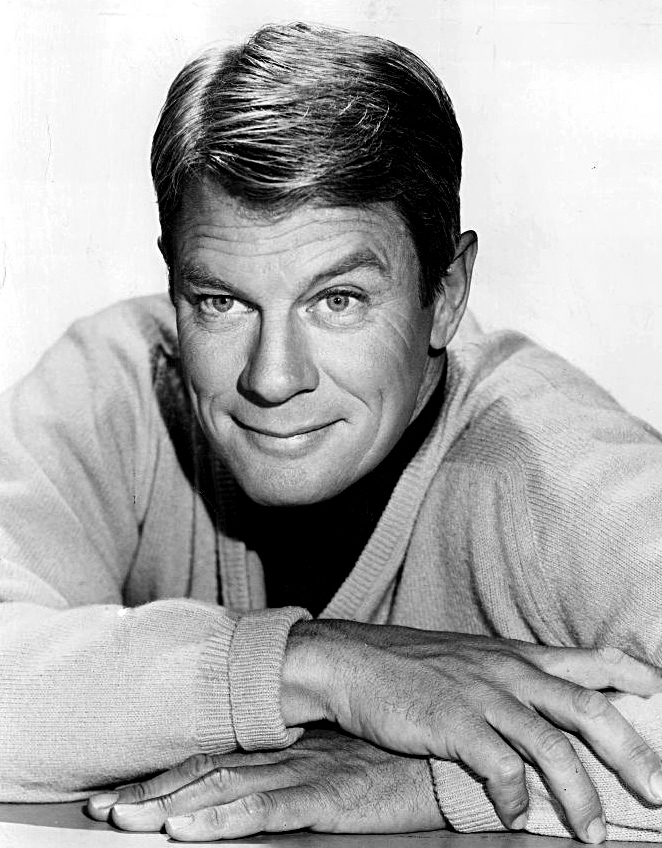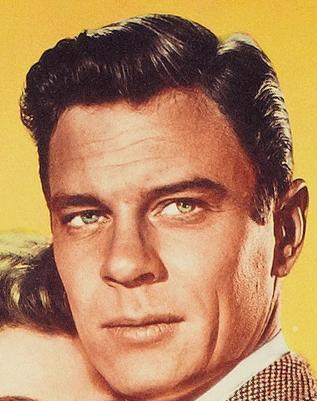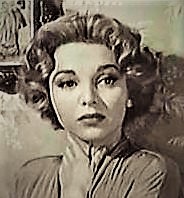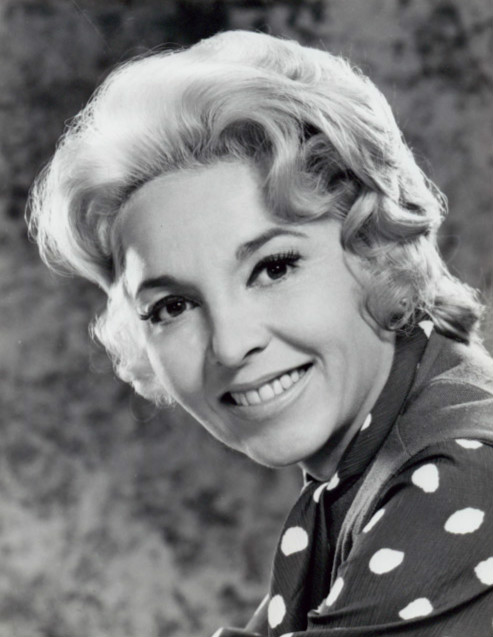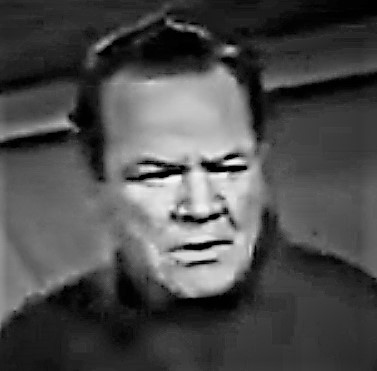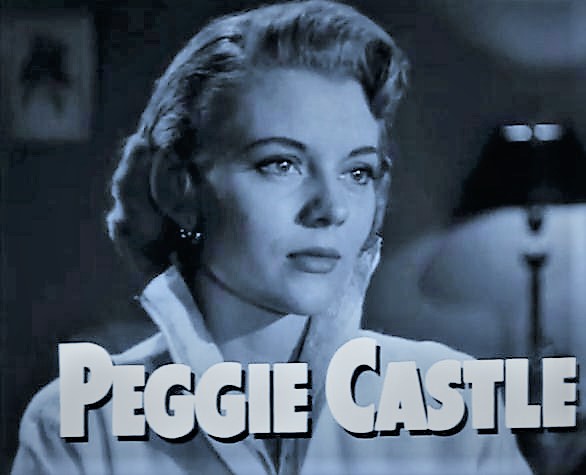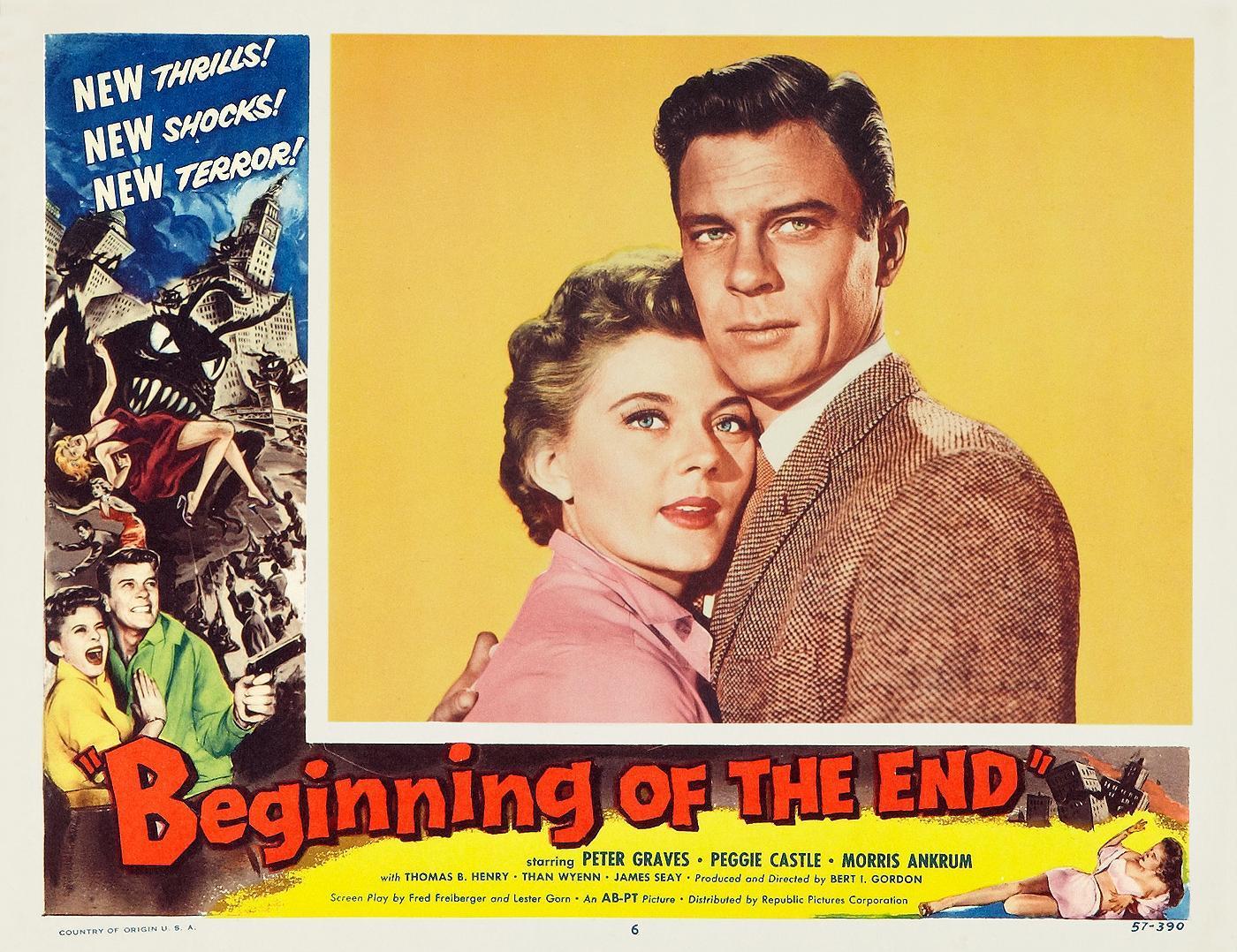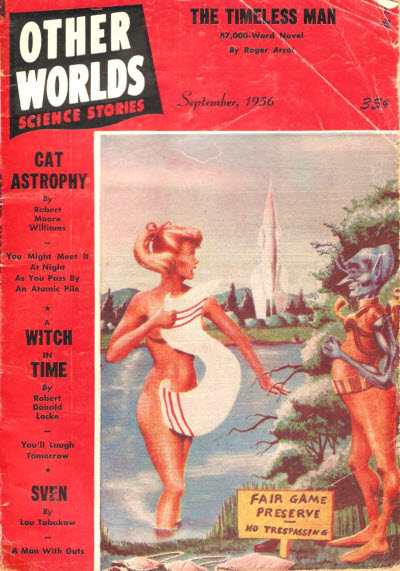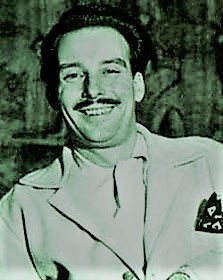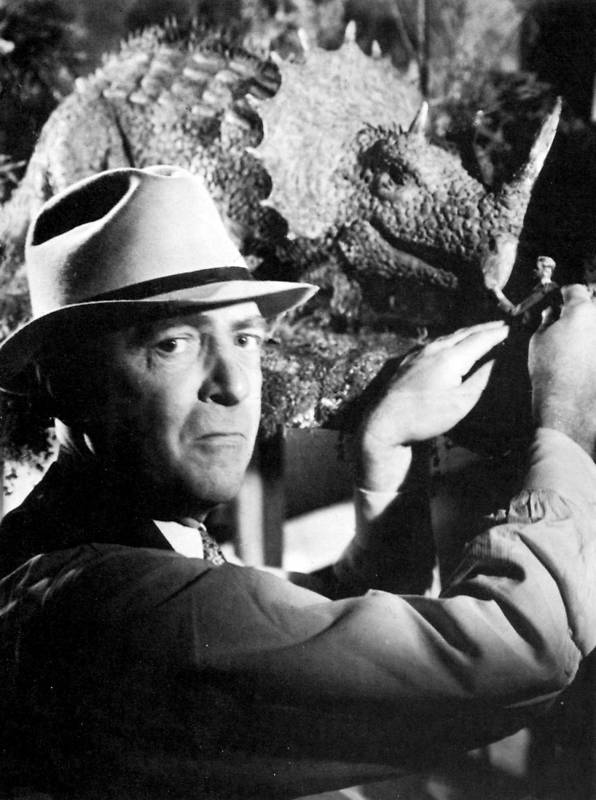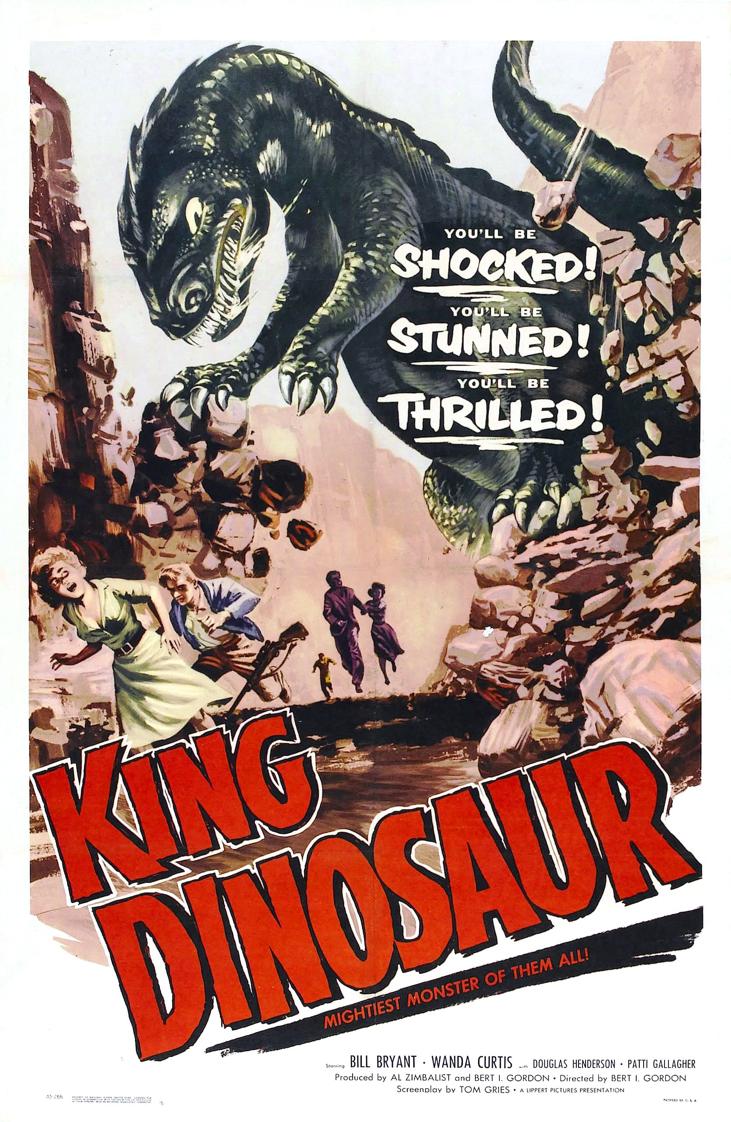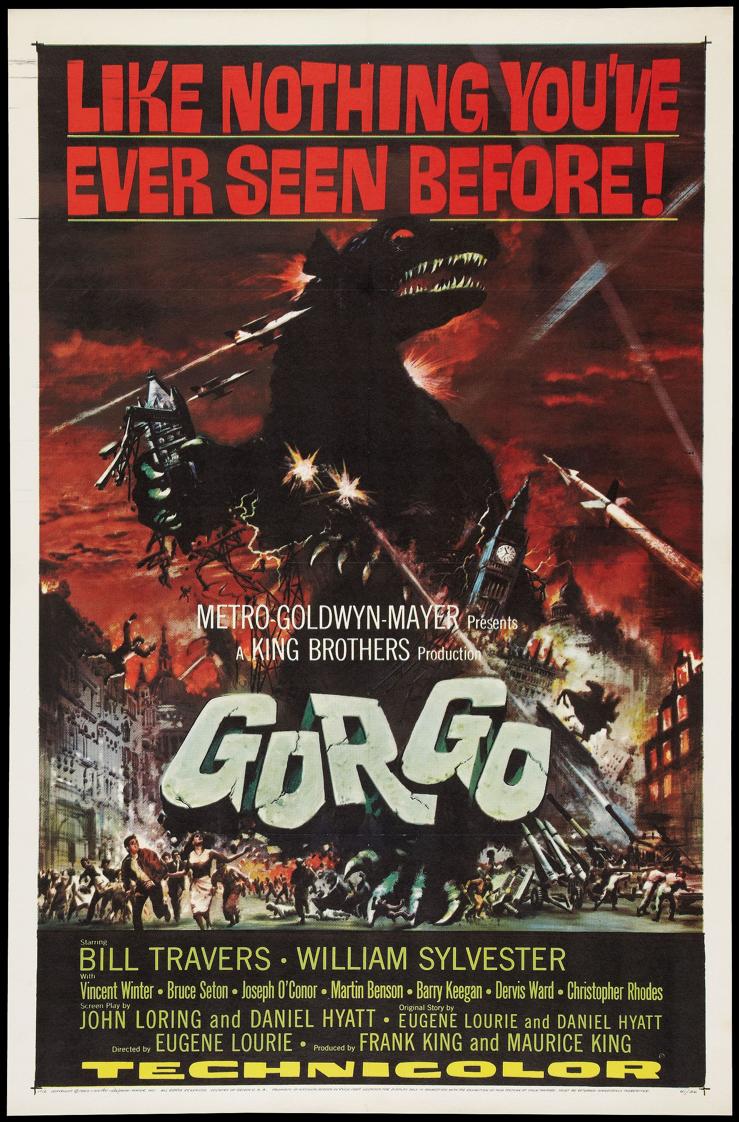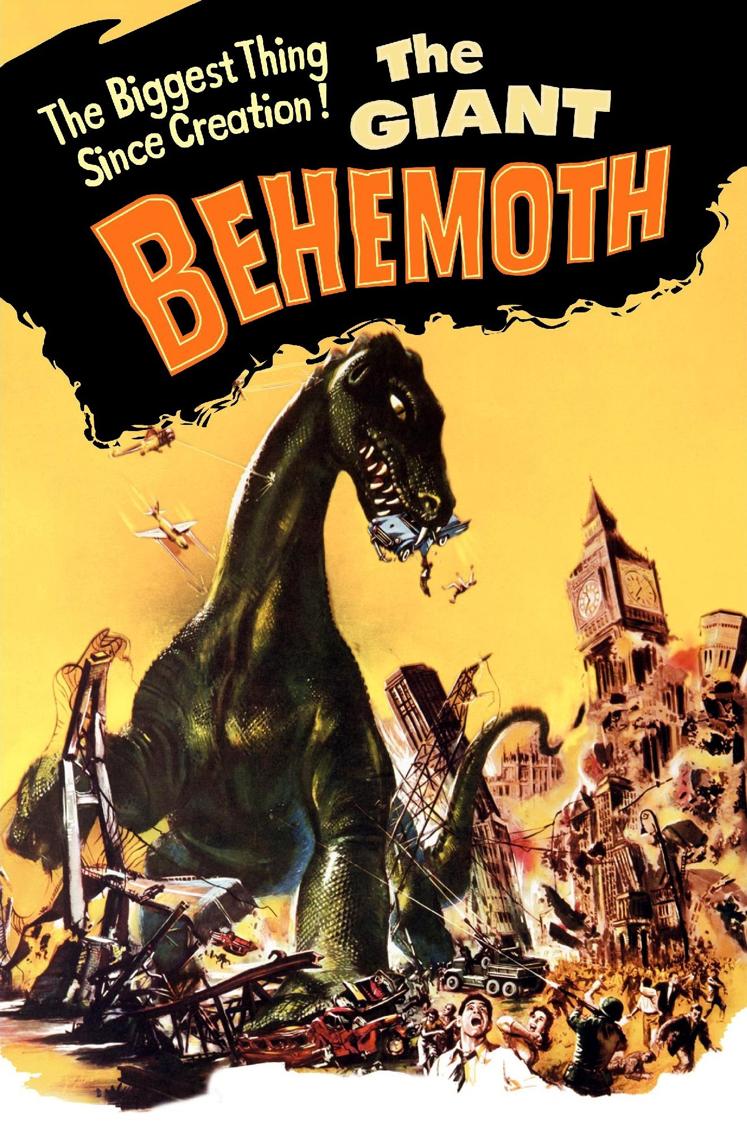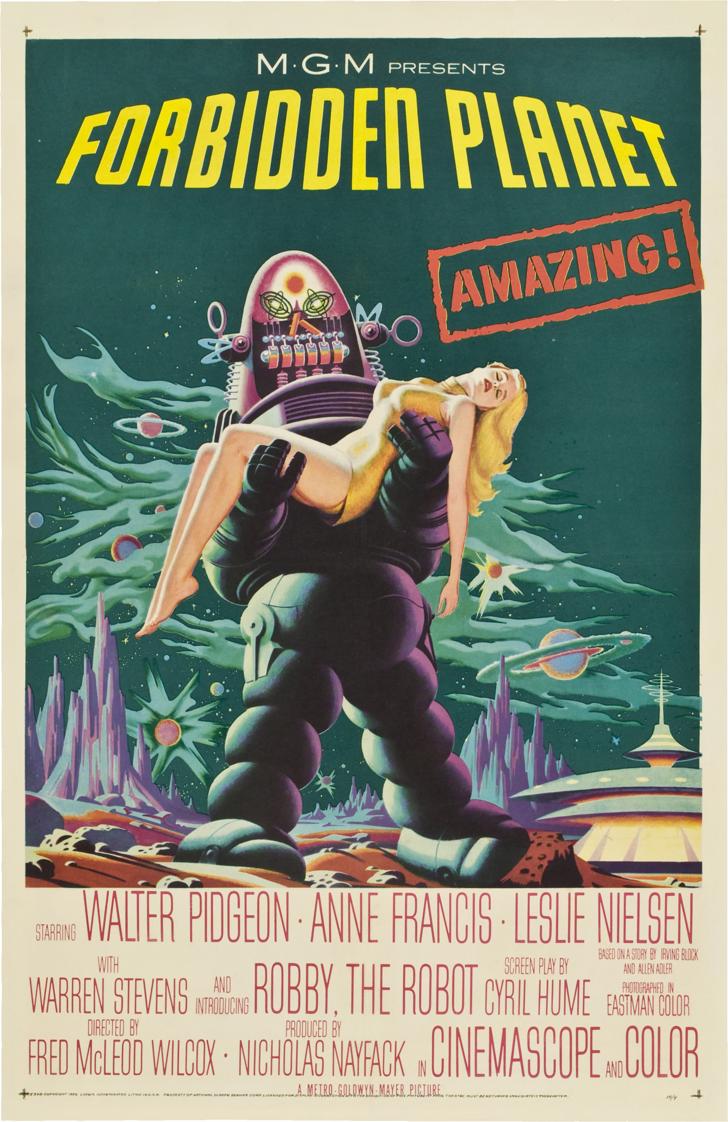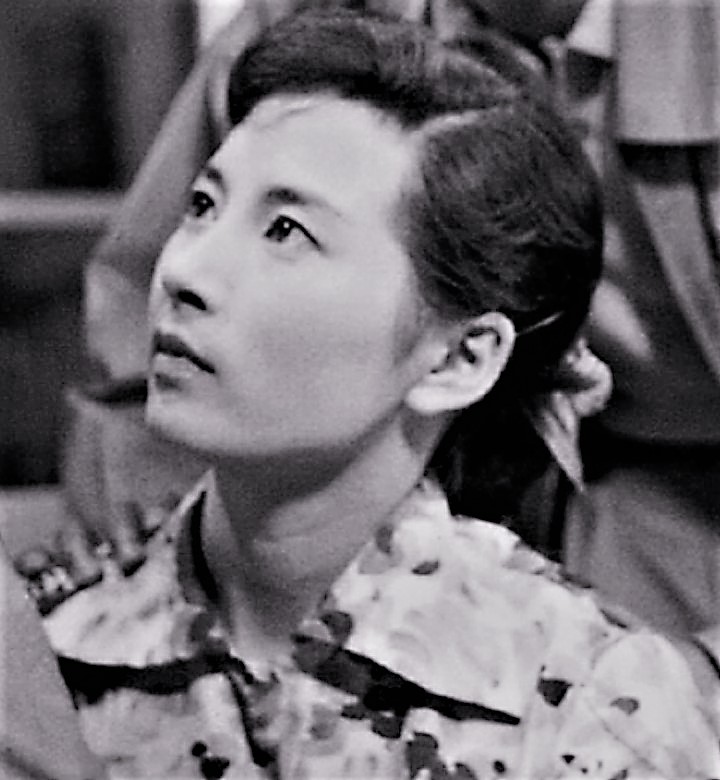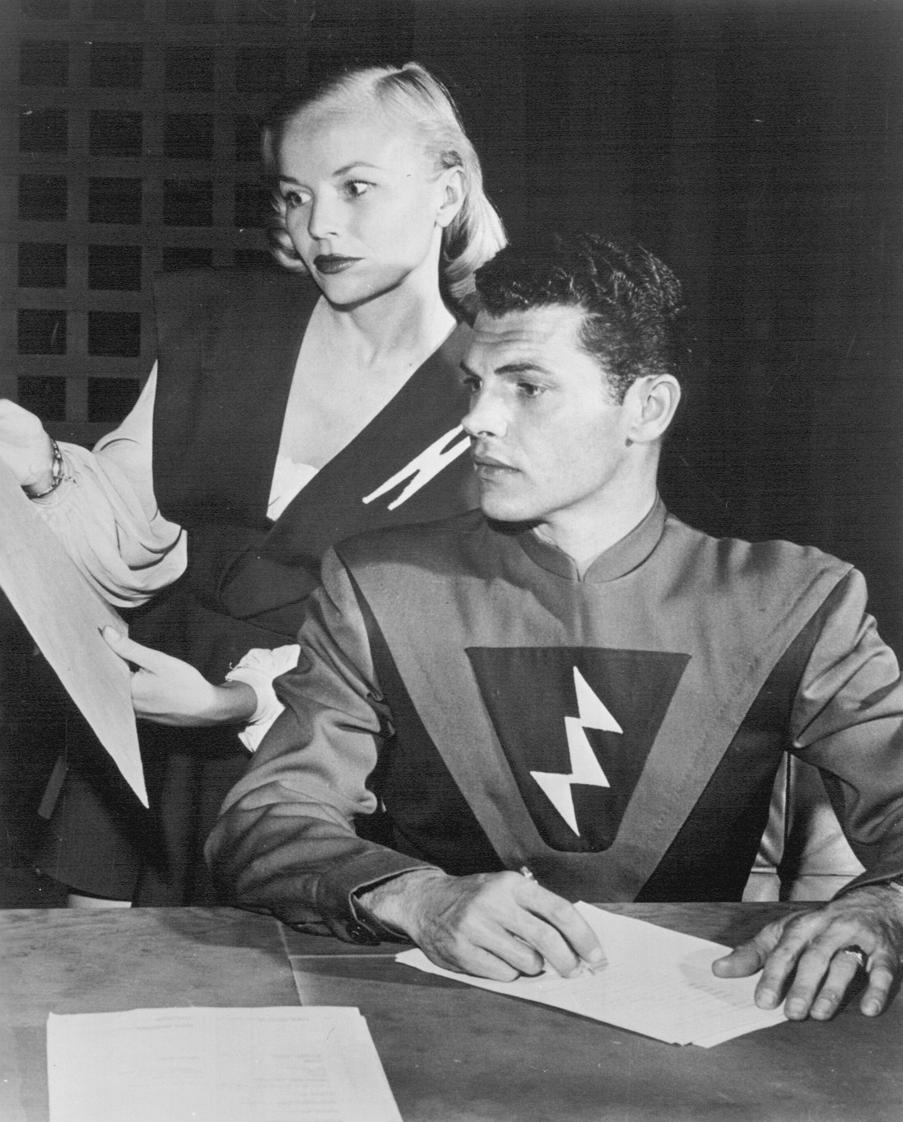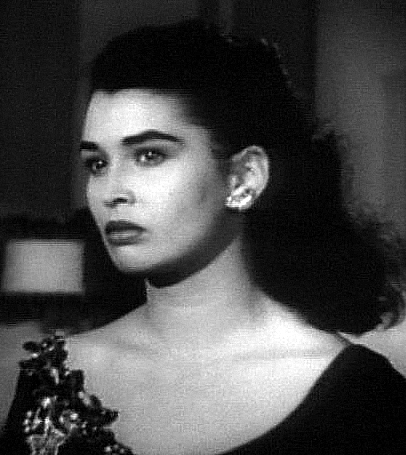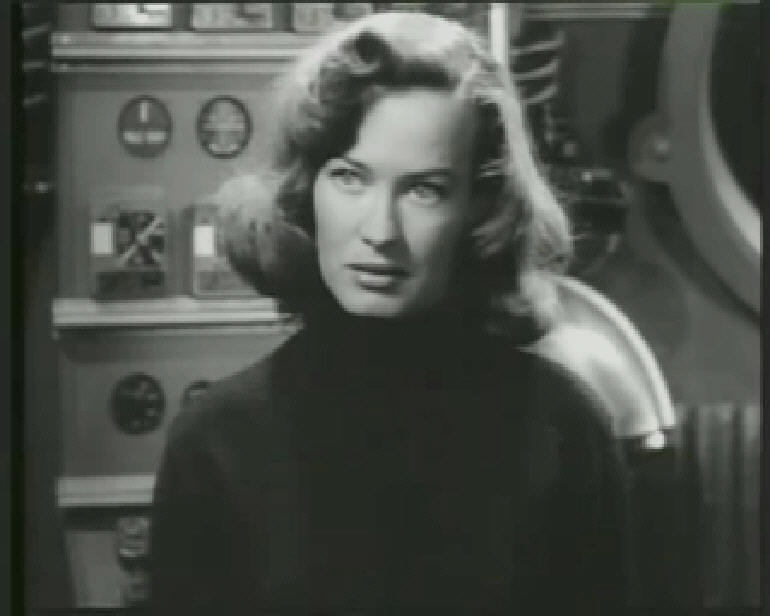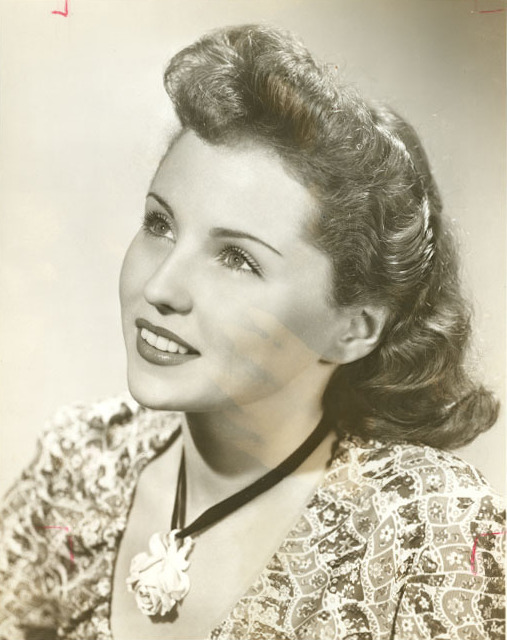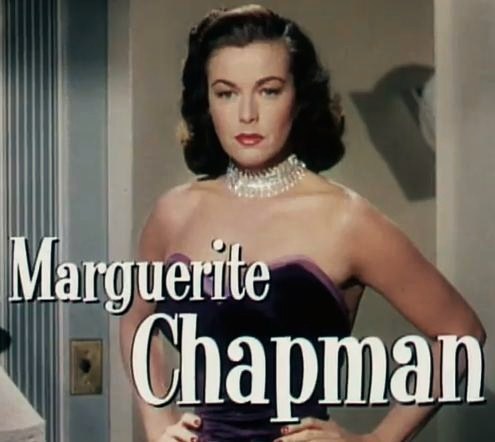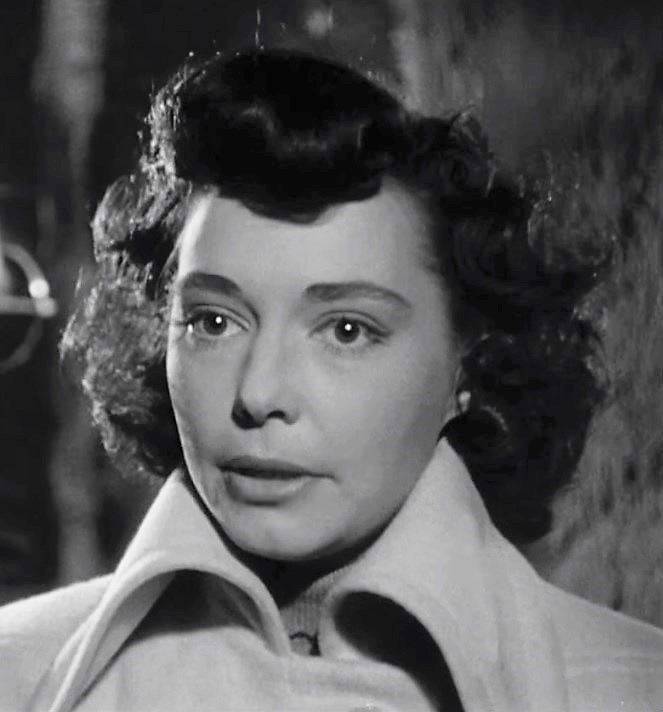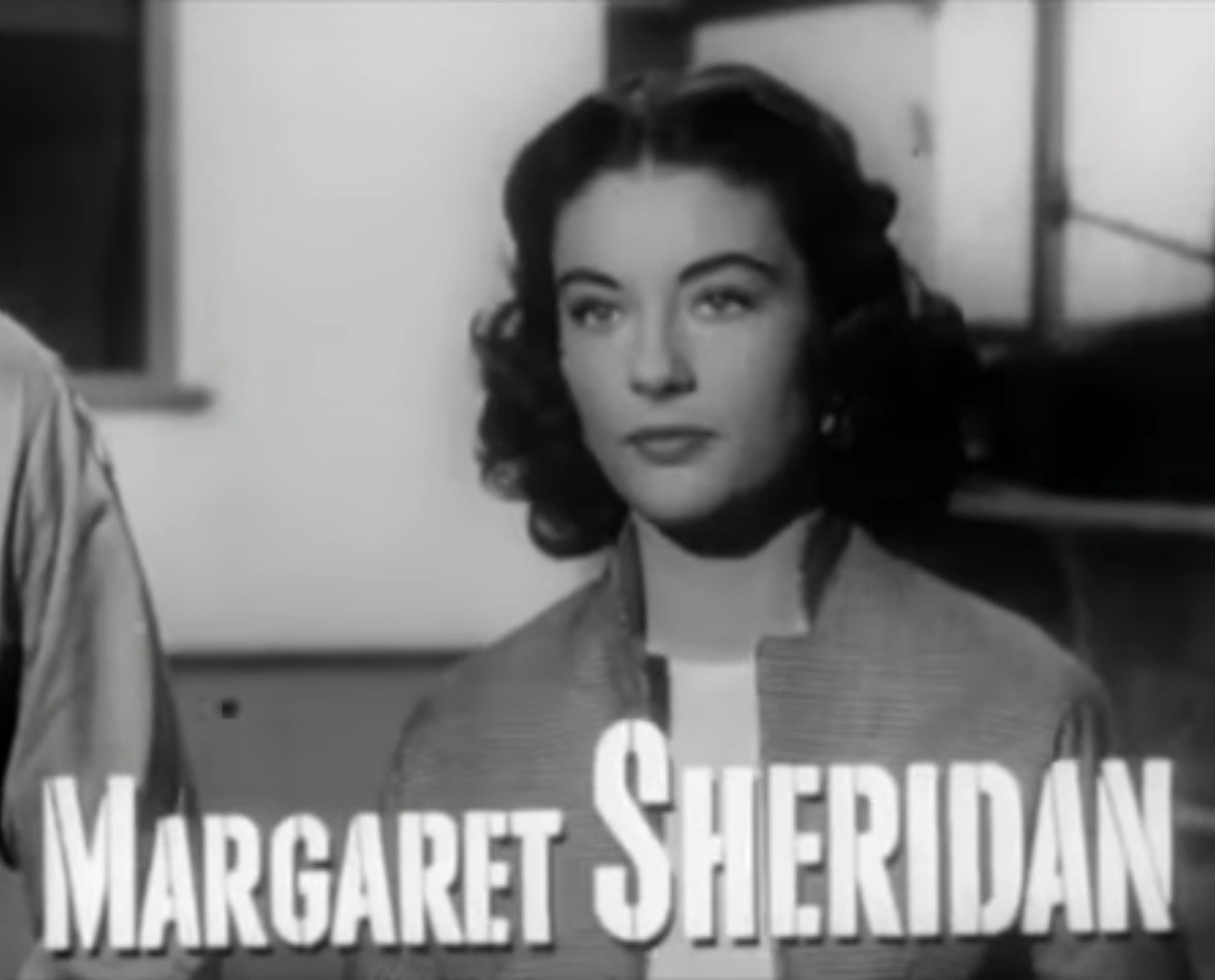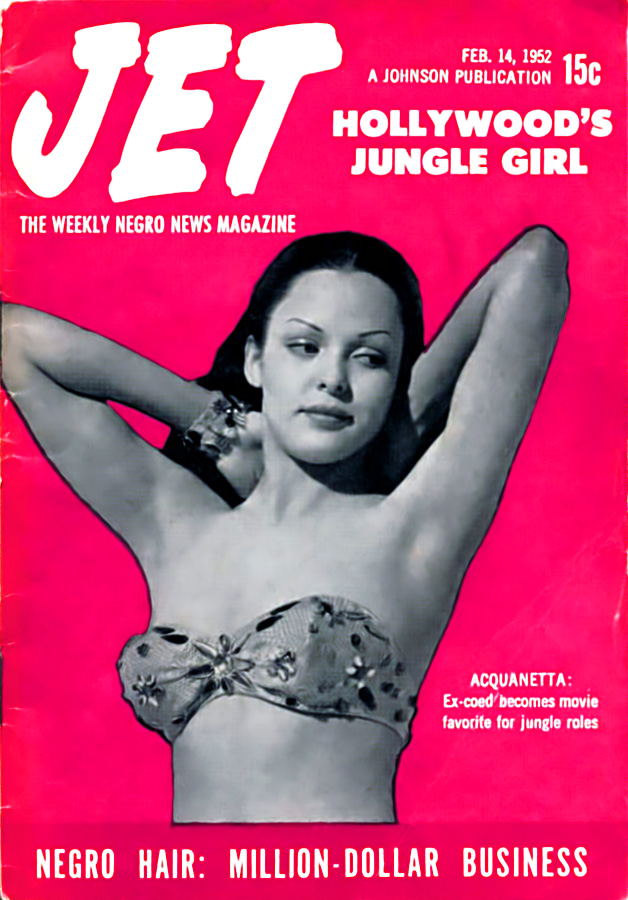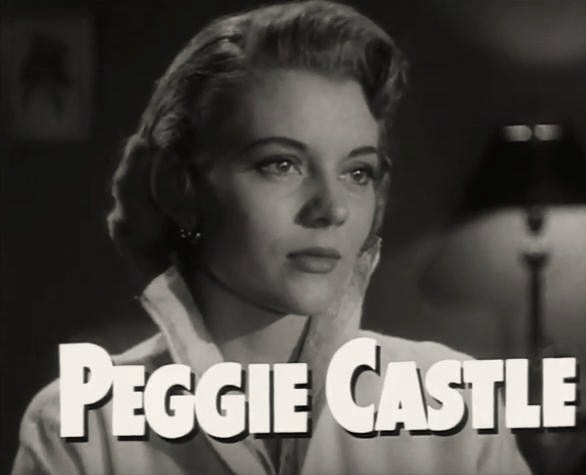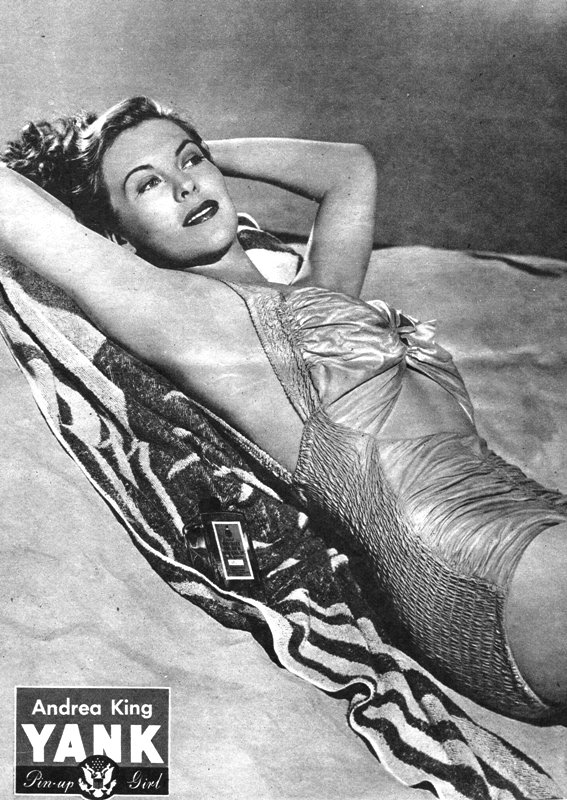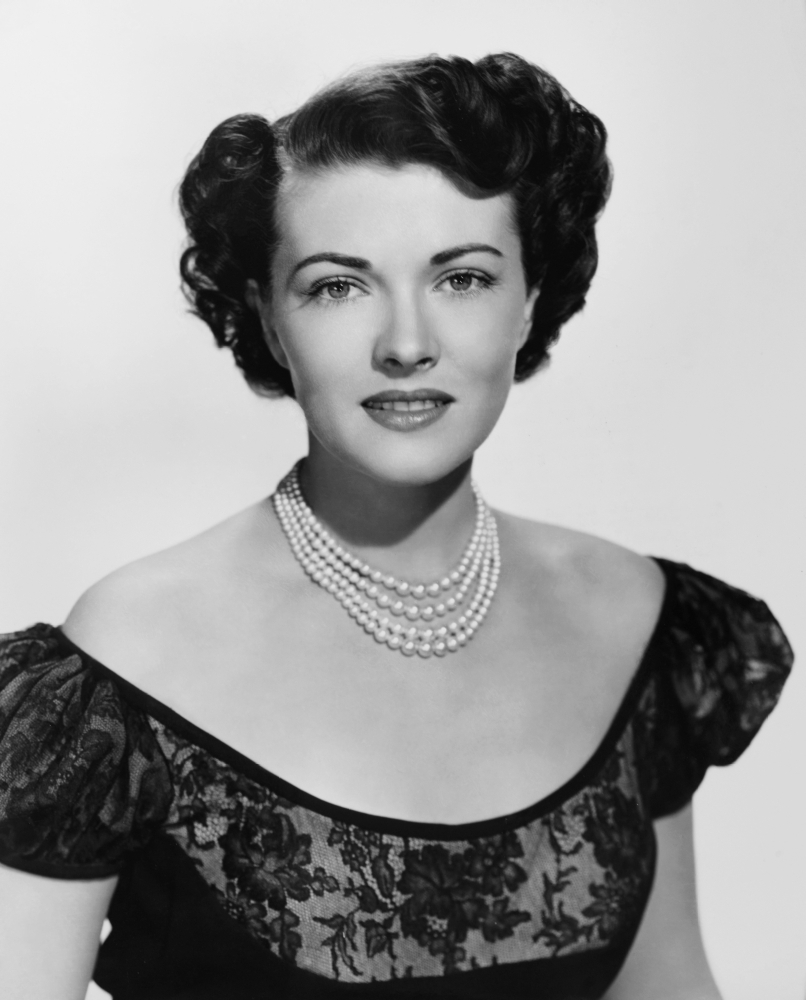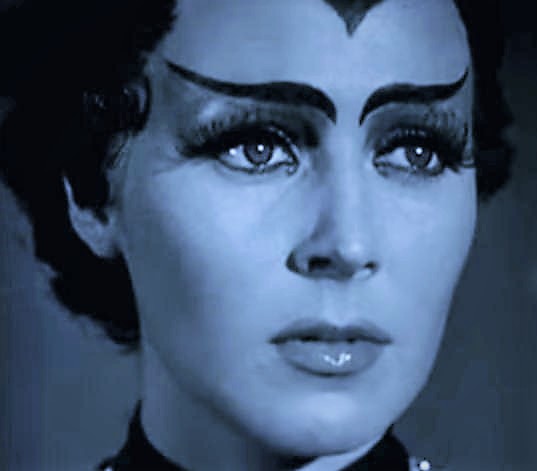1963: Jason and the Argonauts
So, how did Ray Harryhausen achieve that effect of open-mouthed wonder in a young boy of about 7 or 8 years of age sitting in front of a black and white TV set? With the statue, Talos coming to life, Ray based the movement of Talos’ head turning to the camera on a Japanese film in which a woman’s head turns to the camera. Talos’ movements are very labored and slow in order to convey a sense of the height of the bronze statue. Quite a feat with a model which is only about sixteen inches high!
And so, over 50 years later I still enjoy watching this and other films that feature the magic of the master, Ray Harryhausen.
Thank you for the magic, Ray…..
Raymond Frederick "Ray" Harryhausen
(June 29, 1920 – May 7, 2013)
George Pal
By photo by Alan Light, CC BY 2.0, https://commons.wikimedia.org/w/index.php?curid=1131639
"The Next One"
(February 1, 1908 – May 2, 1980)
The Hungarian-born American animator, film producer and director, George Pal, is primarily associated with the science fiction film genre. Among the great productions of George Pal which will be featured in this ebook are;
-
Destination Moon (1950 - Oscar: Special Effects 1950)
-
When Worlds Collide (1951 - Oscar: Special Effects 1951)
-
The War of the Worlds (1953 - Oscar: Best Special Effects 1953)
-
Conquest of Space (1955)
-
The Time Machine (1960 - Oscar: Best Special Effects 1960)
George Pal’s Early Life and Career
-
Born in Cegléd, Austria–Hungary.
-
Pal’s stage-entertainer parents later divorced, and he was raised by his grandparents
-
1928: graduated from the Budapest Academy of Arts at age 20 with a degree in architecture and he possessed highly developed drawing skills.
-
1928 to 1931: made films for Hunnia Films of Budapest, Hungary. At Hunna he quickly learned the craft of motion picture cartooning.
-
1931: at age 23 married Elisabeth "Zsoka" Grandjean.
-
Moved to Berlin, a centre for film innovation, and founded Trickfilm-Studio Gmbh Pal und Wittke. Pal developed his own style of making inanimate objects move, using the developing art of stop-motion photography.
-
Patented Pal-Doll (or Puppetoons in the USA).
-
Working in Prague, Pal make ad shorts or animated advertising featuring cartoon "puppets" without strings such as cigarettes with faces, arms, and legs strutting and singing on theatre screens looking as if they had been drawn by a cartoonist.
-
Pal left Germany as the Nazis were rising to power.
-
1940: Pal emigrated from Europe at age 32 and began work for Paramount Pictures and obtained American citizenship.
-
In the 1940s, he made the Puppetoons series as an animator. As stated in the Ray Harryhausen tribute post, Ray Harryhausen was employed on staff by George Pal during the Puppetoons period.
-
1943: Pal was awarded an honorary Oscar for "the development of novel methods and techniques in the production of short subjects known as Puppetoons."
-
1950s and 1960s: produced several science fiction and fantasy films four of which were collaborations with director Byron Haskin.
You might ask why the addition to the title of the words “The next one?” When asked which of his films was his favorite Pal would reply, “the next one.” Each of his films was a part of a vision that in some way contributed to;
-
Opening up and extending our vision of the universe.
-
Ushering in the era of the golden age of film science fiction with “Destination Moon.”
-
Showing us how not only governments, but also groups of like-minded individuals with the vision, will and resources can send spaceships to the surface of other worlds.
-
Our wonder and entertainment as we watch in horror the destruction of Los Angeles by forces powerful beyond our comprehension.
-
Encouraging a belief in heroes we can look up to and emulate who possess ideals and courage and who dedicate themselves to the pursuit of science and truth.
-
Our understanding of our place in the universe and the forces that shape our destiny.
-
Fostering a belief in how we as individuals and collectively can meet any challenge to humanity and hope and strive for a better future.
-
The development of talented artists, writers and filmmakers, as well as pioneering scientists and astronauts who were inspired by the grand visions of George Pal….
Roger Corman
By JaSunni at PicasaWeb - http://picasaweb.google.com/5chiaroscuro/JaSunni1#5286566774945078306, CC BY-SA 3.0, https://commons.wikimedia.org/w/index.php?curid=6874177
After all these years of movie viewing, one can almost watch a particular film of a particular genre and say, “Yep, that’s a Corman!” For me this is particularly true in the case of Roger Corman’s involvement and influence in the genre of science fiction film.
Roger William Corman
Corman was born on 5 April 1926, Detroit, Michigan, USA. He later studied engineering at Stanford and after working only three days as an engineer at U.S. Electrical Motors he quit.
Corman took a job as a messenger for 20th-Century Fox where he rose to the position of story analyst. He then studied modern English literature at Oxford and roamed around Europe for a year before returning to the U.S. intending to become a screenwriter/producer.
Corman sold his first script in 1953, "The House in the Sea," which was released under the title “Highway Dragnet” in 1954.
Aware of the discrepancy between his initial intention or vision behind his film and what actually turned out on the screen, Corman turned to becoming a producer with the film, “Monster from the Ocean Floor” in 1954.
Corman then struck a deal with a company called American Releasing which became the well-known American International Pictures (AIP). Corman was now part of one of the most successful independent studios.
Lacking any real formal training, Corman took to directing and over a 15 year period directed about 53 films, mostly for AIP.
Corman’s movie-making “trademark” was his uncanny ability to put together quick, cheap productions sometimes even several movies in his capacity as director or producer or both in just a single year! For example, nine movies in just 1957, not to mention the original version of The Little Shop of Horrors which he shot in just two days and a night in 1960!
Both critical acclaim and commercial success came with a series of adaptations of Edgar Allan Poe stories, often starring (who else?) Vincent Price.
Corman’s 1962 film, “The Intruder” concerning racial integration in the South won a prize at the Venice Film Festival, but it was not a commercial success. As a result, he shied away from making films containing overt or direct messages, in favour of films that were entertaining while leaving the social and political issues to filter through beneath the surface.
Corman left AIP after it began re-editing his films without his knowledge or consent and he retired from directing to focus on production and distribution through his own newly-formed company New World Pictures. This company went on to deal with low budget films through to distributing the films of the likes of Ingmar Bergman, Akira Kurosawa, Federico Fellini and François Truffaut.
After selling off New World in the 1980s, Corman was involved with various companies such as, Concorde Pictures, New Horizons, and Millenium Pictures.
Corman has published his biography "How I Made A Hundred Movies in Hollywood And Never Lost A Dime,” and returned to directing with the film, Frankenstein Unbound in 1990.
In 2009, Roger Corman was honored with an Academy Award for Lifetime Achievement.
It seems that Roger Corman could be viewed from a variety of stand points, among them being;
-
A prolific producer
-
Energetic
-
Frenzied pace-setter
-
Successful
-
"The King of the Cult Film"
-
"The Pope of Pop Cinema"
-
Mentor of greats such as Francis Ford Coppola, Martin Scorsese, Jack Nicholson, James Cameron, Robert De Niro, Peter Bogdanovich, Joe Dante and Sandra Bullock
Whatever the case may be, Roger Corman has never pretended to have been a great director or producer. It seems clear that his intent has been to create profitable and successful films that people will enjoy watching, hopefully more than once. I know I have! And here are some of those films by the maestro, Roger Corman most of which will be featured in this ebook series:
-
The Day the World Ended 1956 (Director, Producer: Roger Corman's entree into the realm of science fiction.)
-
It Conquered the World 1956 (Director, Producer)
-
Attack of the Crab Monsters 1957 (Director, Producer)
-
The Brain Eaters 1958 (Executive Producer)
-
War of the Satellites 1958 (Director, Producer)
-
Attack of the Giant Leeches 1959 (Executive Producer)
-
The Man with X-Ray Eyes 1963 (Director, Producer). This was my first sci-fi / horror film that I saw as a young boy. My dad took me to see it on a whim at the cinema in the 1960s and it scared the heck out of me. I remember looking up at him and seeing him stuffing his face with pop corn and smoking cigarettes (which you could do back then) with gusto. He pretended he didn’t think much of the film, but I knew better! Since then I was hooked on such movies! Thanks dad.
Richard Carlson
“Writer, producer, director, film editor - a brilliant guy,"
(Riders to the Stars editor, Herbert L. Strock)
-
Born: Richard Dutoit Carlson on April 29, 1912, Albert Lea, Minnesota, U.S.
-
Died: November 25, 1977 (aged 65), Encino, Los Angeles, California, U.S.
-
Cause of death: Cerebral haemorrhage
-
Occupation: Actor, television and film director, screenwriter covering1937–75
-
Spouse: Mona Carlson (1939 until his death in 1977)
-
Children: Richard Henry Carlson, Christopher Hugh Carlson
-
Parents: Mabel Du Toit & Henry Carlson
Richard Carlson was born in Albert Lea, Minnesota, the son of an attorney. He graduated from the University of Minnesota with a Master of Arts degree in English. After a brief stint as a drama teacher he settled on the performing arts where he invested his money in buying his own theatre in Minneapolis, featuring himself as the star. By the age of 23, he performed on Broadway opposite Ethel Barrymore, Jimmy Durante and Ethel Merman.
His first film role was in the 1938 David O. Selznick comedy “The Young in Heart.” He worked as a freelance actor, appearing in many different film studio works, beginning in 1939 when he moved to California. Prior to the war, Carlson appeared mostly in comedies and dramas some being quite ordinary second features or commercial failures. However, in “The Little Foxes” (1941) he had a standout performance as newspaperman, David Hewitt.
Carlson’s career was interrupted by his serving in World War II. After returning he found it difficult to obtain new roles. In 1948 he was cast in two low-budget film noir films, “Behind Locked Doors” and “The Amazing Mr. X.” Greater success came Carlson’s way when in 1950 he co-starred with Deborah Kerr and Stewart Granger in the highly successful MGM Technicolor remake of “King Solomon's Mines.”
Of particular relevance to the subject of this eBook series is the then newly emergent science fiction and horror B films of the 1950s which gave Carlson an avenue for the rebuilding of his career. Richard Carlson went on to star in several cult sci-fi features such as Jack Arnold's, “It Came from Outer Space” (1953), “The Magnetic Monster” (1953) and “Creature from the Black Lagoon” (1954).
Carlson both directed and starred in the 1954 science fiction film “Riders to the Stars.” Of particular note was his performance as astronomer John Putnam in” It Came from Outer Space.” It stands as one of the greatest performances of science fiction film, delivered as it was with intelligence and passion.
Apart from his various film and television writing and directing projects, Carlson starred in the Cold War drama television series “I Led Three Lives” from 1953 to 1956. It was based on a book of the same title by Herbert A. Philbrick. This was at a time when America was in the grip of McCarthyism. In the series Carlson played the role of Herbert A. Philbrick who infiltrated the Communist Party on behalf of the FBI.
In the 1958-1959 television season Carlson played the part of Colonel Ranald Mackenzie in the western series, “Mackenzie's Raiders.”
For the remainder of his acting career, Carlson made guest appearances in western and detective series such as, “The Virginian” (1962), “Perry Mason” (1957), “The F.B.I.” (1965) and “Cannon” (1971); directed westerns such as “Kid Rodelo” (1965) and also wrote TV scripts as well as magazine articles on various non-fiction subjects.
After his retirement in 1975, Richard lived the last two years of his life in Sherman Oaks, California.
Carlson died of a cerebral haemorrhage on November 25, 1977 in Encino, California. He was buried in Los Angeles National Cemetery, in West Los Angeles. Richard Carlson has a star on the Hollywood Walk of Fame for his contribution to the television industry.
FILMOGRAPHY
|
Change of Habit (1969)
|
Whispering Smith Hits London (1951)
|
|
The Valley of Gwangi (1969)
|
Valentino (1951)
|
|
The Power (1968)
|
King Solomon's Mines (1950)
|
|
The Doomsday Flight (1966)
|
Behind Locked Doors (1948)
|
|
Kid Rodelo (1965)
|
The Amazing Mr. X (1948)
|
|
Della (1964)
|
So Well Remembered (1947) with John Mills
|
|
Tormented (1960)
|
The Man from Down Under (1943)
|
|
The Unchained Goddess (1958)
|
Presenting Lily Mars (1943)
|
|
Hemo the Magnificent (1957)
|
A Stranger in Town (1943)
|
|
The Strange Case of the Cosmic Rays (1957)
|
Young Ideas (1943)
|
|
The Helen Morgan Story (1957)
|
Fly-By-Night (1942)
|
|
Three for Jamie Dawn (1956)
|
Highways by Night (1942)
|
|
An Annapolis Story (1955)
|
White Cargo (1942)
|
|
Bengazi (1955)
|
The Affairs of Martha (1942)
|
|
The Last Command (1955)
|
My Heart Belongs to Daddy (1942)
|
|
Creature from the Black Lagoon (1954)
|
Hold That Ghost (1941)
|
|
Riders to the Stars (1954)
|
Back Street (1941)
|
|
It Came from Outer Space (1953)
|
The Little Foxes (1941)
|
|
All I Desire (1953)
|
West Point Widow (1941)
|
|
Seminole (1953)
|
The Ghost Breakers (1940)
|
|
The Maze (1953)
|
The Howards of Virginia (1940)
|
|
The Magnetic Monster (1953)
|
No, No, Nanette (1940)
|
|
Flat Top (1952)
|
Too Many Girls (1940)
|
|
Retreat, Hell! (1952)
|
Beyond Tomorrow (1940)
|
|
The Rose Bowl Story (1952)
|
Little Accident (1939)
|
|
The Blue Veil (1951)
|
Winter Carnival (1939)
|
|
A Millionaire for Christy (1951)
|
Dancing Co-Ed (1939)
|
|
The Sound of Fury (1951)
|
These Glamour Girls (1939)
|
|
|
The Duke of West Point (1938)
|
|
|
The Young in Heart (1938)
|
TELEVISION SERIES
Mackenzie's Raiders, 1958-1959 syndicated TV series
I Led Three Lives, 1953-1956 syndicated TV series
Jack Arnold was one of the leading science fiction filmmakers of the 1950s whose films reflected his own genuine enthusiasm for the genre.
Jack Arnold was born on October 14, 1916 in New Haven, Connecticut. He was the son of Russian immigrants who ran the concession counter for a local cinema.
As a youngster, Jack read a lot of science fiction pulp magazines, which laid the foundations for his classic 1950s science fiction genre films.
Arnold's parents relocated the family to New York City, where Arnold's father had some success as a stockbroker. Even though his parents intended Jack to pursue a professional career in law or medicine, he was more drawn to live theater. With the 1929 stock market crash and a downturn in family fortunes, Arnold had a successful audition with the American Academy of Dramatic Arts thereby granting him entre into the program.
Arnold acted in both on-and off-Broadway stage productions in the late 1930s and early 1940s. Plays he appeared in included, “The Time of Your Life,” “Juke Box Jenny,” “Blind Alibi,” “China Passage” and “We're on the Jury.”
During World War II, while serving in the Signal Corps. Arnold learned the techniques of film making from famous documentary filmmaker, Robert Flaherty.
Jack began making short films and documentaries after his war service with one short film, “With These Hands” (1950) being nominated for an Academy Award as Best Documentary Feature. His theatrical movie debut came with the B picture, “Girls in the Night” (1953). Arnold’s film output ranged from crime thrillers and westerns to melodramas and love stories.
Of particular relevance to the subject matter of this ebook series, Arnold directed a number of excellent 1950's science fiction films, including “It Came from Outer Space,” “Tarantula,” “Creature from the Black Lagoon,” “The IncreBible Shrinking Man,” “Monster on the Campus” and “The Space Children.” “Creature from the Black Lagoon” (1954) has achieved cult popularity while “The Incredible Shrinking Man” (1957) was possibly Arnold's greatest cinematic achievement.
Arnold also went to England to direct the Peter Sellers film, “The Mouse That Roared.” This early effort helped to establish Peter Sellers as an international star.
Jack Arnold’s television career began in 1955 with several episodes of Science Fiction Theatre. From this he went on to direct the long-running television series Perry Mason, Rawhide and Peter Gunn, as well as episodes of much loved television shows such as Alias Smith and Jones, The Fall Guy, The Brady Bunch, Gilligan's Island (yes, Gilligan’s Island!), Mod Squad, Wonder Woman, The Love Boat and The Bionic Woman.
Jack Arnold died at age 75 of arteriosclerosis in Woodland Hills, Los Angeles, California on March 17, 1992.
Jack Arnold’s films generally feature eerie, atmospheric and moody black and white cinematography, competent acting, thoughtful scripts and lively pacing.
As his career progressed, Arnold was spending most of his time directing for television where as a director he could not assert himself in the same way as he may have been used to when directing the sorts of 1950s sci-fi films he wanted to direct, and which tended to reflect his own distinctive character and passion for the genre.
As for the central character in his film,” The Incredible Shrinking Man,” there is something of him in most of us that we can identify with: Individuals who strive to play a meaningful role in a universe which seeks to dwarf our significance and stature. For Jack Arnold, his significance, legacy and stature is established as being one of the most skilled directors of B-movie, sci-fi films during the 1950s.
Richard Denning
A Sci-Fi Cult Classic Hero
As this book deals mainly with classic science fiction films from the Golden Age of screen sci-fi, it is no surprise that tribute should be made to actor, Richard Denning. Richard Denning is best known for starring in science fiction films of the 1950s, including “Unknown Island,” “Creature from the Black Lagoon,” “Target Earth,” “Day the World Ended,” “Creature with the Atom Brain,” and “The Black Scorpion.”
Richard Denning was born as Louis Albert Heindrich Denninger, Jr., on March 27, 1914 in Poughkeepsie, New York (USA). He was the son of a garment manufacturer who relocated and set up shop in Los Angeles when Denning was 18 months old.
After finishing school, Denninger enrolled at Woodbury Business College and majored in business and accounting, graduating with honours with a master's in business administration. Despite his father wanting him to join the family business and not being enthralled with accounting, Denning took a night-school course in drama, became involved in little theatre groups and competed in a radio contest called, "Do You Want to Be an Actor?" winning a screen test at Warner Brothers in 1936. Warners Brothers, however, wasn't interested in him because he resembled another well-known actor (Errol Flynn) they had under contract. With his heart set on a movie career, Denninger was eventually signed by Paramount, who required him to change his name to Richard Denning since Denninger sounded too much like the gangster, John Dillinger's name! From 1937 to 1942 Denning appeared in over 50 films for Paramount, many being bit roles.
After roles in films including, “Hold 'Em Navy” (1937), “Campus Confessions” (1938), “Hiding” (1939), “Queen of the Mob” (1940), “Adam Had Four Sons” (1941-Columbia), Denning secured the leading role opposite Dorothy Lamour in “Beyond the Blue Horizon” (1942).
Denning’s military service in the Navy as a First Class Petty Officer in the submarine service during World War II disrupted his acting career. It was a year and a half after his discharge from military service before Paramount Pictures offered him any more acting work. During that time, Denning and his family lived in a mobile home in Malibu and Palm Springs. During that period, they made a good living by catching, eating and selling lobsters.
Denning was at last hired to star on radio with Lucille Ball as George Cooper in “My Favorite Husband” (1948–1951). Apart from starring roles in classic science fiction films, Richard Denning also appeared in the film “An Affair to Remember” (1957) with Cary Grant. He also shared title billing with Barbara Britton in the detective series “Mr. and Mrs. North” (1952–1954). He was later cast as Dr Greg Graham in the 1959 series, “The Flying Doctor” and starred as the title character in the detective series “Michael Shayne” (1960–1961).
Later in his career, after completing his last film, “I Sailed to Tahiti,” Richard Denning was offered the role as the governor of Hawaii, Paul Jameson, in the CBS television crime drama series, “Hawaii Five-O” (1968–1980).
Richard Denning was married to 1940s horror film queen, Evelyn Ankers (m. 1942–1985) and then to Patricia Leffingwell (m. 1986–1998). He died on October 11, 1998 in Escondido, California (USA).
A Little Side Note:
Denning’s wife, Evelyn Ankers often co-starred with Lon Chaney Jnr who drank heavily and with whom she did not get along. At one point during a Universal function, matters reached a boiling point between Lon Chaney and Denning when Denning threw his sundae into Chaney's face. Chaney had to be physically restrained from throwing hot coffee into Denning's face!
Faith Domergue
An exotic and sultry cult favourite
Born in New Orleans, Louisiana, U.S. on June 16, 1924, Faith Marie Domergue (pronounced at her insistence as "Dah-mure") was part Creole, but mostly of Irish and English decent. She was adopted by Adabelle Wemet when she was six weeks old.
In 1926, when she was 18 months old, Adabelle married Leo Domergue. Both her adoptive parents would never tell Faith that she was not their own. The family moved to California in 1928 where Domergue attended Beverly Hills Catholic School and St. Monica's Convent School.
While still a student at University High School, she was signed to a Warner Brothers contract and had her name shortened to "Faith Dorn." In 1941, she made her first onscreen appearance in Blues in the Night.
After graduating in 1942, Faith Domergue continued to pursue her acting career. However, this had to be put on hold after she suffered a disfiguring injury during a car accident when she was thrown into a windshield, and had to spend 18 months undergoing intensive plastic surgery.
While recuperating from the accident, she attended a party aboard Howard Hughes's yacht. the Southern Cross, Hughes was 21 years her senior and became infatuated with the teenage Faith. He bought out her contract from Warner Brothers for $50,000, and signed her to a three-picture contract with the studio he owned, RKO Pictures.
At that time Hughes presented Faith with a diamond engagement ring after a gala at the Palm Springs Racquet Club and asked her to keep it secret. After she discovered that Hughes was also seeing Ava Gardner, Rita Hayworth, and Lana Turner, she broke up with Hughes in 1943.
Faith appeared in “Young Widow” in 1946, with Jane Russell. She also starred in the Hughes expensive $3.2 million film “Vendetta” which was finally released in 1950 after the firing of three directors in quick succession. This film and the film noir “Where Danger Lives” (1950) performed indifferently at the box office.
In 1946, Domergue married bandleader Teddy Stauffer. The marriage lasted six months, ending in 1947. That same year, she married director Hugo Fregonese with whom she had two children, Diana Maria and John Anthony. The couple divorced in 1958.
During the early ‘50s Faith began to freelance at other studios, appearing in westerns: “The Duel at Silver Creek” (1952), with Audie Murphy; “The Great Sioux Uprising” (1953), with Jeff Chandler; and “Santa Fe Passage” (1955) with John Payne at Republic.
In 1955 she starred in memorable classic sci-fi films, “This Island Earth,” “ It Came from Beneath the Sea,” “The Atomic Man” / "Timeslip" and “Cult of the Cobra.” Her appearance in such science-fiction films from this period enabled Faith to acquire something of a cult following.
She later made films in the United Kingdom and Italy, and a final appearance in a sci-fi film, “Voyage to a Prehistoric Planet,” in 1965. In the late 1950s and 1960s she also made many appearances on popular television series, such as “Sugarfoot,” “Have Gun Will Travel,” “Bonanza,” and “The Rifleman.”
By the late 1960s, Faith Domergue had lost interest in acting as a career, and her last acting appearances consisted mostly of low-budget 'B' horror movies. In 1966, she married Paolo Cossa, with whom she remained until his death in 1991. She eventually became an expatriate in Rome, Geneva, Switzerland, and Marbella, Spain, until the death of her husband, Paolo Cossa in 1991. She then moved to Santa Barbara where she continued to live until her death in 1999 from cancer, aged 74.
Hugh Marlowe
The Man Who Would Be A Star
Hugh Marlowe (Hugh Herbert Hipple), American film, television, stage and radio actor, was born on January 30, 1911 in Philadelphia, Pennsylvania, United States.
Hugh Marlowe began his stage career in the 1930s at the Pasadena Playhouse in California. He was often cast as a secondary lead or supporting actor in the films he appeared in.
Marlowe’s films included;
-
Meet Me in St. Louis (1944)
-
Twelve O’clock High (1949)
-
All About Eve (1950)
-
Rawhide (1951)
-
Howard Hawks' Monkey Business (1952)
-
Elmer Gantry (1960)
-
Birdman of Alcatraz (1962)
-
Seven Days in May (1964)
Of particular interest to the subject matter of this book is Hugh Marlowe’s roles in science fiction films during the 1950s. These films include;
Earth vs. the Flying Saucers
-
The Day the Earth Stood Still (1951)
-
The Magnetic Monster (1953)
-
Earth vs. the Flying Saucers (1956)
-
World without End (1956)
Richard Carlson
It is very easy to see how Hugh Marlowe can be easily confused with actor, Richard Carlson. The physical similarity between them is quite remarkable.
Marlowe also has a way of speaking with clear and precise enunciation of words so that the audience has no trouble hearing and understanding what he is saying: a quality sadly lacking in many actors of the modern era.
In relation to his appearances in classic sci-fi films of the 50s, it is ironic that Marlowe regarded science fiction as being rather beneath his dignity, and something better to avoid while pursuing one’s career.
In the classic 1951 sci-fi film, “The Day the Earth Stood Still,” Marlowe competently played the role of Tom Stevens, an unscrupulous man intent only on pursuing fame and his own social and economic advancement by being instrumental in delivering the alien Klaatu to the authorities.
After performing at the Pasadena Playhouse, Hugh Marlowe had minor roles in major productions like “Mrs Parkington” (1944) with Greer Garson and “Meet Me in St. Louis” (1945) with Judy Garland, Then came more significant roles in films like “Twelve O’clock High” (1949) with Gregory Peck, “All about Eve” (1950) with Bette Davis and “Monkey Business” (1952) with Cary Grant.
At about the time of his appearance in “The Day the Earth Stood Still,” Marlowe's film career progress stalled somewhat, resulting in a greater willingness to accept leading roles in low-budget science fiction films. For instance, in “World without End,” Hugh Marlowe plays the commander of four astronauts who find themselves in a post-holocaust future. In “Earth vs. the Flying Saucers” he had a more pivotal role as the film’s main protagonist. His performances in both films while not particularly exceptional or note-worthy, were nevertheless quite satisfactory.
There were no more starring roles for Marlowe after “Earth vs. the Flying Saucers.” Instead, he appeared primarily as a television guest star, usually in westerns or crime dramas.
In 1962, Marlowe played the part of Sam Garner in the episode "The Pitchwagon" on CBS's Rawhide. He made six guest appearances on CBS's “Perry Mason,” starring Raymond Burr and he was a regular on the NBC television daytime drama, “Another World.” In that drama, he was the last of four actors to portray the Matthews family patriarch, Jim Matthews, from 1969 until Marlowe's death on May 2, 1982, from a heart attack at the age of seventy-one.
Hugh Marlowe was married three times:
-
Actress Edith Atwater (1941-1946)
-
Actress K. T. Stevens (1946–1968) - two sons with Marlowe
-
Rosemary Tory (1968–1982) - one child with Marlowe
Hugh Marlowe Quote: "I've always believed the kindest thing a man can do in this business is tell someone when they should get another line of work." –Marlowe’s advice to Ronald Reagan when they were co-workers at WOC radio station in Davenport in 1933 when Reagan was about to be dismissed as a young announcer for his poor delivery of commercials. Reagan promptly ignored Marlowe’s advice, improved his microphone delivery technique and avoided dismissal. (History might have taken a different turn if he took the advice. Makes you wonder: What If….?!)
Whit Bissell
A solid supporting foundation for film & TV sci-fi
Whit Bissell was born in New York on 25 October. 1909. He died on 5 March, 1996 in Woodland Hills, California at the age of 86.
Whit Bissell began his career in the theatre where he appeared on Broadway in a production of "Hamlet" (1936), "Star-Wagon" (1937), "The American Way" (1939), "Cue for Passion" (1940), "Cafe Crown" (1942) and "Winged Victory" (1943).
In Hollywood, Whit Bissell acted in thrillers, Westerns and science-fiction films. In his many supporting roles, he came to be that familiar face of credible authority, invariably appearing in the role of a doctor, scientist, or general in some science fiction B-movie or TV series.
His many science fiction, horror and other film credits include;
-
That Lady in Ermine (1948)
-
For Heaven's Sake (1950)
-
Lost Continent (1951)
-
Target Earth (1954)
-
The Atomic Kid (1954)
-
Creature from the Black Lagoon (1954)
-
Invasion of the Body Snatchers (1956)
-
I Was a Teenage Werewolf (1957)
-
I Was a Teenage Frankenstein (1957)
-
Monster on the Campus (1958)
-
The Time Machine (1960)
-
The Manchurian Candidate (1962)
-
Seven Days in May (1964)
-
Fluffy (1965)
-
Soylent Green (1973)
-
Psychic Killer (1975)
He also appeared in various episodes of such popular TV series as;
-
Out There (1951)
-
The 20th-Century Fox Hour (1955)
-
Science Fiction Theatre (1956)
-
One Step Beyond (1959)
-
Men into Space (1959)
-
The Outer Limits (1963)
-
The Alfred Hitchcock Hour (1963)
-
Voyage to the Bottom of the Sea (1965)
-
The Time Tunnel Series (1966-1967)
-
Star Trek (1967)
-
The Invaders (1967)
-
Land of the Giants (1970)
Whit Bissell managed to convey a sense of maturity, integrity, consistency and reliability as an actor who seemed to never tire of essentially playing the same part again and again.
There were, however, some memorable stand out roles for Whit Bissell. The other day I saw a solid but brief performance of his in the film, “Brute Force” (1949) starring Burt Lancaster. In this film, Whit Bissell played the part of one of Lancaster's cell-mates who was forced into taking his own life due to the cruel pressure placed on him by the sociopath prison guard captain.
Whit Bissell managed to leave behind a legacy that included some 300 film and television appearances. In 1994, he received a Life Career Award from the Academy of Science Fiction, Fantasy & Horror Films for his work with those genres.
Morris Ankrum
A dependable and familiar character actor
Morris Ankrum (Morris Nussbaum) was born in Danville, Vermilion County, eastern Illinois on 28 August 1896. Ankrum graduated from The University of Southern California with a law degree and went on to an associate professorship in economics at the University of California, Berkeley.
The road toward a career in acting began at Berkeley when Ankrum became involved in the drama department and went on to teach drama and directing at the Pasadena Playhouse. Between 1923 and 1939, he acted in various Broadway stage productions such as “The Big Blow” and “Within the Gates.”
After signing with Paramount Pictures, Ankrum used the name "Stephen Morris" before changing it to Morris Ankrum in 1939.
Ankrum had the kind of presence and appearance that led him to be cast in supporting roles as an authority figure, more often than not as an army general or other military officer.
During Ankrum’s thirty year career that included some seventy mostly B-grade films, he had some notable roles. One such role was in “Tennessee Johnson” (1942) as Senator Jefferson Davis addressing the United States Senate upon his resignation to lead the Confederate States of America as its president.
Ankrum had numerous roles in western films and series such as “Ride 'Em Cowboy” (1942), “Apache” (1954), “The Adventures of Rin Tin Tin” “,Bronco,” “Maverick,” “Tales of the Texas Rangers,” “Cimarron City,” “Rawhide” and “The Rifleman.”
He is also well-remembered for his performances in science fiction genre films as a gruff, no-nonsense authoritative military officer assisting scientists as they fight off alien menaces to our planet. Most of these films will be featured in this book series such as;
-
Rocketship X-M (1950)
-
Flight to Mars (1951)
-
Red Planet Mars (1952)
-
Invaders From Mars (1953)
-
Earth vs. the Flying Saucers (1956)
-
Kronos (1957)
-
Beginning of the End (1957)
-
The Giant Claw (1957)
-
From Earth to the Moon (1958) and
-
X—The Man With the X-Ray Eyes (1963).
From 1957 until his death in 1964, Ankram made frequent appearances in Perry Mason playing the role of a judge presiding over murder trials.
On September 2, 1964, Ankrum died of trichinosis. His final appearance in a TV series was on the Perry Mason, episode, "The Case of the Sleepy Slayer," and his last film appearance was in “Guns of Diablo” (1965), released after his death.
Ishirō Honda
"Monsters are born too tall, too strong, too heavy—
that is their tragedy,"
Ishirō Honda (7 May 1911 - 28 February 1993) was a Japanese film director who is best known for his kaiju and tokusatsu films, including several of the “Godzilla” films. He also worked extensively in the documentary and war genres earlier in his career.
Honda was born in Asahi, Yamagata prefecture (part of the city of Tsuruoka), Japan. He was the youngest of five children and was born in the Chinese Year of the Boar to Yoshihiro and Miyo Honda. Honda’s given name was derived from "ino" (a shortening of the Japanese word for “boar”) and "shirô" ("fourth son").
Honda’s family was forced to make ends meet by selling talismans and harvesting rice, chestnuts, radishes, and silkworms for the manufacture of silk.
In 1933 Honda graduated from Nihon University College of Art (Nichidai)
Honda found postgraduate work in the Production Department of PhotoChemical Laboratories, a film development company linked to the Japanese film industry. Honda was employed by PCL as an assistant director. It took Honda eighteen years of working as an assistant director to finally achieve his dream of becoming a director in his own right. This was time he spent undertaking all kinds of work and roles behind the camera such as scouting locations, hauling around equipment, cutting film and writing scripts.
Honda was later drafted into the Imperial Japanese Army in China where he was stationed in both Nanking and Manchuria.
At the time of Honda’s army discharge in 1937, there was a merger of PCL and a number of independent film studios into the newly-founded Toho Motion Picture Company.
It was at Toho where Honda assisted director Kajirô Yamamoto and befriended the legendary Akira Kurosawa. It was also at Toho that Honda met his future wife, script girl Kimi Yamazaki, to whom he would be married for more than fifty years.
Once again Honda served in the military as a platoon leader sergeant charged with hunting down Chinese insurgents. He then spent six months as a prisoner of war and was repatriated in 1946. It was at this time that he saw the devastation that the atom bomb had caused to the city of Hiroshima.
In 1949, Honda assisted Akira Kurosawa on “Stray Dog,” scouting locations and directing the second unit. In 1951 he directed his first theatrical directorial film titled, “The Blue Pearl.” Of significance to the subject matter of this ebook series, Honda's 1954 film, “Gojira” / “Godzilla” would have a profound and lasting impact on science fiction cinema.
Toho's production of “Gojira” was prompted and inspired by the stories that emerged concerning the after-effects of atomic radiation from the atomic bombs that were dropped on Hiroshima and Nagasaki in 1945, as well as the atomic testing at Bikini Atoll in 1954. The film was also inspired by the 1933 classic, “King Kong” which was re-released in 1952 as well as “The Beast from 20,000 Fathoms” in 1953.
“Gojira” would be the most expensive motion picture produced in Japan at that time, The film reflected aspects of Japan’s national and collective psyche by delving into issues of responsibility and guilt and calling into question Japan’s militaristic traditions.
Honda went on to direct many other science fiction films such “King Kong vs. Godzilla” (1962); “Mothra vs. Godzilla” (1964); “Destroy All Monsters” (1968); as well as tokusatsu films such as “Rodan” (1956), “Mothra” (1961) and “The War of the Gargantuas” (1966). His last feature film was “Terror of Mechagodzilla” (1975).
After retiring as a director, Honda worked with Kurosawa during the 1980s and '90s. as a directorial advisor, production coordinator and creative consultant on his last five films.
Ishirō Honda Filmography
|
The Man Who Came to Port (1952)
|
The Human Vapor (1960)
|
|
Adolescence Part II (1953)
|
Mothra (1961)
|
|
Eagle of the Pacific (1953)
|
Gorath (1962)
|
|
Farewell Rabaul (1954)
|
King Kong vs. Godzilla (1962)
|
|
Godzilla (1954)
|
Matango (1963)
|
|
Love Makeup (1955)
|
Atragon (1963)
|
|
Cry-Baby (1955)
|
Mothra vs. Godzilla (1964)
|
|
Half Human (1955)
|
Dogora, the Space Monster (1964)
|
|
Night School (1956)
|
Ghidorah, the Three-Headed Monster (1964)
|
|
Godzilla, King of the Monsters (1956)
|
Frankenstein vs. Baragon (1965)
|
|
People of Tokyo, Goodbye (1956)
|
Invasion of Astro-Monster (1965)
|
|
Rodan (1956)
|
The War of the Gargantuas (1966)
|
|
Young Tree (1956)
|
King Kong Escapes (1967)
|
|
A Teapicker's Song of Goodbye (1957)
|
Destroy All Monsters (1968)
|
|
Song for a Bride (1958)
|
All Monsters Attack (1969)
|
|
The H-Man (1958)
|
Latitude Zero (1969)
|
|
Varan the Unbelievable (1958)
|
Space Amoeba (1970)
|
|
Battle in Outer Space (1959)
|
Terror of Mechagodzilla (1975)
|
Nominations have included:
Russell Johnson
“I am the Professor, and that's the way it is.”
(November 10, 1924 – January 16, 2014)
Russell Johnson was best known for playing Professor Roy Hinkley (the "Professor") on Gilligan's Island which aired from 1964 to 1967. Johnson had to deal with the fact that throughout a large part of his acting career he was to be typecast as a generic scientist or professor-type character.
Childhood & Family
-
Born on November 10, 1924, in Ashley, in Luzerne County, Pennsylvania
-
Parents: Russell Kennedy Johnson who died of pneumonia (1901-1932) and Minnie Wenonah Smink-Johnson (1902-1976) who was remarried to Thomas S. Lewis
-
Siblings: Brothers:- Kenneth (1925-2012), David (1926-1976), and Paul Wesley (1932-1933). Sisters:- Lorraine Johnson-Crosby and Marian L. Johnson-Reeves (1923-2010)
-
Education: attended Girard College, a private boarding school in Philadelphia for fatherless boys
Military Career
-
Enlisted in the United States Army Air Forces as an aviation cadet
-
After completion of training, commissioned a second lieutenant
-
Flew 44 combat missions in the Pacific Theater during World War II as a bombardier in B-25 twin-engine medium bombers
-
March 4, 1945, shot down during a low-level bombing and strafing run against Japanese military targets in the Philippine Islands, while flying as a navigator in a B-25. Johnson’s B-25 had to ditch in the sea. Both of his ankles were broken in the landing
-
Johnson was awarded a Purple Heart as well the Air Medal, the Asiatic-Pacific Campaign Medal with three campaign stars, the Philippine Liberation Ribbon with one campaign star, and the World War II Victory Medal
-
November 22, 1945 after Japan's surrender, Johnson was honorably discharged as a first lieutenant
Acting Career
Johnson undertook acting studies at the Actors' Lab in Hollywood where he met actress Kay Cousins (1923-1980), whom he married in 1949.
He appeared with friend Audie Murphy in “Column South” and “Tumbleweed” in 1953 and Ride Clear of Diablo in 1954.
Johnson's early roles were mostly in westerns such as “Law and Order” and various TV series including;
-
Rod Cameron's crime drama, “City Detective.”
-
The religion anthology series “Crossroads.”
-
Guest starring in the NBC western series, “The Californians.”
-
A recurring role as Marshal Gib Scott on ABC's western series, “Black Saddle.”
-
Four appearances in the military drama, “The Silent Service,” based on actual stories of the submarine section of the United States Navy.
More significantly for the purposes of this ebook series, Johnston appeared in significant 1950s science fiction films and series episodes such as;
-
“It Came from Outer Space” (1953) playing the role of George the linesman, just one of the townspeople who start disappearing but who later shows up in town, acting quite unlike himself. An alien speaks through George revealing that he is part of the crew of an extraterrestrial ship which inadvertently crash-landed on Earth.
-
“This Island Earth” (1955) playing the role of scientist Dr. Steve Carlson. He, together with fellow scientists, Meacham and Adams, try to escape from Exeter whose activities and very presence Meacham is suspicious about. Russell Johnson has a small role but his character is quite heroic.
-
“Attack of the Crab Monsters” (1957) playing the role Hank Chapman the technician who is the real hero of the film. Funny how he struggled putting together a workable radio but could easily at a moment’s notice whip up a device to immobilize or kill a giant crab! We wouldn’t expect less from the “Professor.”
-
“The Space Children” (1958) in which Russell Johnson is cast as the rather menacing alcoholic step father of one of the children.
-
Twilight Zone “Execution” (1960) playing the role of a college professor.
-
Twilight Zone “Back There” (1961) in which his character attempts to prevent the assassination of Abraham Lincoln.
-
Outer limits “Specimen Unknown” (1964) in which Johnson appeared as a crew member on a US space station.
Post-Gilligan's Island
-
Johnson went on to appear in several movies and television shows, guest starring in such TV series as The Big Valley, The Invaders, Ironside, The F.B.I, and Gunsmoke.
-
He had a daughter, Kim and son, David with his second wife Kay Cousins.
-
In 1982, Johnson married Constance "Connie" Dane. Johnson was married three times
-
Johnson published his memoirs, Here on Gilligan's Isle, in 1993.
-
David Johnson died of AIDS-related complications on October 27, 1994
-
On January 16, 2014 Russell Johnson died from kidney failure at his home in Bainbridge Island, Washington at the age of 89
Russell Johnson will always be remembered as an accomplished actor who had some great supporting roles in some of the finest classic sci-fi films from the 1950s. Like us, his characters were not supermen types who could rise to meet any challenge and win. Sometimes we win and sometimes we lose. There are times when we are strong and times when we aren’t. Yes, we’re human and in films there are flawed human-type characters as well who need that certain kind of actor who can portray them well. Russell Johnson was one such actor. Of course, we’ll also remember a certain screen character's crazy inventions that didn’t always seem to work the way he intended or how his fellow castaways hoped they would! But like Gilligan, we always had faith in the “Professor.”
John Zaremba
(October 22, 1908 - December 15, 1986)
"In Hollywood I'm viewed as a lawyer, judge or doctor, and that's what I've concentrated on."
Born in Chicago Illinois, John Zaremba is best known as an American actor who mostly had supporting roles in science fiction films and TV series. He is probably best remembered as a regular cast member in the Irwin Allen 1960s science fiction series “The Time Tunnel” (ABC-TV).
Prior to acting, John Zaremba was a journalist for the Grand Rapids Press and Chicago Tribune newspapers until 1949, when he moved to Hollywood to try to become a full-time actor.
The first three years involved Zaremba making minor uncredited appearances, until in 1953 when he was cast in a supporting role in the sci-fi film, “The Magnetic Monster.” From then on Zaremba, would appear in numerous 1950s sci-fi films, such as the classic “Earth vs. the Flying Saucers” (1956), usually playing the role of a scientist working to prevent extraterrestrial threats to humanity.
Throughout his career, Zaremba appeared in many non-sci fi films and TV series such as “I Led 3 Lives” in which he played an F.B.I. agent; “Perry Mason”; “Ben Casey”; “Bonanza;” “ Get Smart” and finally as Dr. Harlen Danvers in “Dallas.”
"Well, I'm afraid it's true. You just can't tell about the future." (Dr. Raymond Swain)
Sci Fi Films
-
The Magnetic Monster (1953)
-
Earth vs. the Flying Saucers (1956) as Prof. Kanter
-
The Night the World Exploded as Daniel J. Winters (Asst. Secretary of Defense)
-
20 Million Miles to Earth (1957) as Dr. Judson Uhl
Sci Fi Television Series
-
Science Fiction Theatre (TV Series), “The Strange Lodger” (1957) as FCC Agent Brummer
-
The Twilight Zone, “No Time Like the Past” (1963) as the Horn Player
-
Voyage to the Bottom of the Sea, “Time Bomb” (1965) as Admiral Johnson & “Eleven Days to Zero” (1964) as Dr. Selby
-
The Time Tunnel (30 episodes) as Dr. Raymond Swain
-
The Invaders, original series, “Labyrinth” (1967) & “The Watchers” (1967)
-
Land of the Giants, “Deadly Pawn” (1969) as Dr. Lalor
John Zaremba was married to Eleanor and they had three children. He died on December 15, 1986 in Newport Beach, California, USA.
"Anything that creates faith is a miracle"
(Dr. Raymond Swain)
Peter Graves
"My career had been built on the solid, straightforward, honest, hard-working guy,"
(Peter Duesler Aurness)
(March 18, 1926 – March 14, 2010)
Peter Graves was an American film and television actor who was best known for his role as Jim Phelps in the CBS television series “Mission: Impossible” from 1967 to 1973 and from 1988 to 1990. His elder brother was actor James Arness (1923–2011) who we saw as the alien in “The Thing from Another World” and as the star of the television series “Gunsmoke.” We also know Graves for his portrayal of airplane pilot Captain Clarence Oveur in the 1980 film “Airplane!” (Flying High) and the 1982 sequel “Airplane II: The Sequel.”
Family Background
Peter Graves was the son of Rolf Cirkler Aurness, a businessman, and his wife Ruth, a journalist. Graves' ancestry was Norwegian, German, and English.
The family name originally was "Aursnes," but Rolf's Norwegian father, Peter Aursnes, changed the spelling when he immigrated to New York City in 1887.
To avoid confusion with his older brother, James Arness, Peter adopted the stage name "Graves", a maternal family name.
Education & Military Service
Graves graduated from Southwest High School in 1944.
During World War II, Peter and his brother, James Arness joined the US Army. Arness was an infantryman and was wounded in the battle of Anzio, Italy, while Graves was posted to the then Army Air Force which later became a separate branch of the US military.
Peter then enrolled at the University of Minnesota on the ‘G.I. Bill,’ or The Servicemen's Readjustment Act of 1944, a law that provided benefits for returning World War II veterans. At University, he was a member of Phi Kappa Psi fraternity.
Acting Career
Peter Graves appeared in more than seventy films, television shows, and television movies throughout his career.
In 1955, Graves appeared in the NBC television series “Fury,” as the rancher, Jim Newton.
Graves featured in the 1953 World War II film, “Stalag 17.”
From 1960-61 Graves starred as leading character, Christopher Cobb in the TV series “Whiplash.” His character was an American who came to Australia in the 1850s to establish the country's first stagecoach line. His trademark weapon to fight the bad guys was the bull-whip instead of a gun.
Graves went on to star in the British made ITC series “Court Martial” playing U.S. Army Lawyer Major Frank Whittaker. He then had guest roles in such series as Alfred Hitchcock Presents, Route 66 and The Invaders.
In 1967, Graves replaced Steven Hill as the lead actor on “Mission: Impossible.” Graves portrayed the character of James Phelps, a role for which he is best remembered by Baby-boomers like me.
After the Mission Impossible series ended in 1973, Graves had roles in a feature film, “Sidecar Racers” in 1975; the soap opera “Class of 74”; and in the 1983 the ABC miniseries, “The Winds of War” as Palmer Kirby.
Suddenly the serious, “solid, straightforward, honest, hard-working guy” transformed into the character Captain Clarence Oveur in the early 80s comedy films, “Airplane!” and “Airplane II: The Sequel.” The earnest dead-pan demeanor of his earlier characters was now used to comedic effect.
1988 saw the creation of a new “Mission: Impossible” series with Graves in his old role as James Phelps and being the only cast member from the original series to return as a regular. This series lasted for two seasons, ending in 1990.
During the 1990s, Peter Graves hosted and narrated the documentary series “Biography.” Graves later parodied his Biography work in the film “Men in Black II,” in which his character hosted an exposé television show. He also played Colonel John Camden on the television series “7th Heaven.”
On October 30, 2009, Graves was honored with a star on the Hollywood Walk of Fame.
In that year he was featured in an AirTran Airways video campaign promotion appearing in what else, but a pilot's uniform topped off with Airplane! references.
In 2009 Graves signed on as a spokesman for reverse mortgage lender American Advisors Group, appearing in a national commercial in which he marketed reverse mortgages.
Graves' final project was narrating the computer game epic “Darkstar: The Interactive Movie,” released November 5, 2010.
Death
After returning from a brunch on March 14, 2010, Graves collapsed and died of a heart attack at the age of 83, just four days before his 84th birthday.
Awards
Golden Globe Award in 1971 for his role as Jim Phelps in the series “Mission: Impossible.”
Primetime Emmy Award for outstanding informational series in 1997 as host of “Biography.”
Filmography
|
Up Front (1951)
|
The Naked Street (1955)
|
|
Fort Defiance (1951)
|
The Night of the Hunter (1955)
|
|
The Congregation (1952)
|
The Court-Martial of Billy Mitchell (1955)
|
|
Red Planet Mars (1952)
|
It Conquered the World (1956)
|
|
Stalag 17 (1953)
|
Hold Back the Night (1956)
|
|
War Paint (1953)
|
Canyon River (1956)
|
|
East of Sumatra (1953)
|
Beginning of the End (1957)
|
|
Beneath the 12-Mile Reef (1953)
|
Bayou (1957)
|
|
Killers from Space (1954)
|
Death in Small Doses (1957)
|
|
The Yellow Tomahawk (1954)
|
Wolf Larsen (1958)
|
|
The Raid (1954)
|
A Stranger in My Arms (1959)
|
|
Black Tuesday (1954)
|
Whiplash (1959–60)
|
|
Fort Yuma (1955)
|
A Rage to Live (1965)
|
|
The Long Gray Line (1955)
|
Texas Across the River (1966)
|
|
Robbers' Roost (1955)
|
Branded (1966) Senator Keith Ashley in "The Assassins" (2 episodes)
|
|
Wichita (1955)
|
The Ballad of Josie (1967)
|
|
Fury TV Series (1955 - 1960)
|
Mission: Impossible (1967-1973)
|
|
|
Mission: Impossible vs. the Mob (1968) (compilation of both parts of the two-part Mission: Impossible episode "The Council" re-edited and released to European theatres)
|
|
|
Sergeant Ryker (1968)
|
|
|
The Five Man Army (1969)
|
|
|
The President's Plane is Missing (1973 TV movie)
|
Before there was a Jim Phelps, leader of the Impossible Missions Force who always chose to accept dangerous undercover assignments!
Before there were tapes that self-destructed in a matter of seconds!
Before there was a Captain Oveur who invited young boys into his plane’s cockpit and inquired, “Have you ever been in a Turkish prison?”
THERE WAS………
Graves the astronomer, Chris Cronyn in “Red Planet Mars” (1952), married to an eye-rolling-around-the sockets-McCarthyite-right wing-fundamentalist-Christian-crazy person wife: In this science fiction film. Graves’ character receives messages from Mars which suggest that it is from a Utopian society. But is this all the work of Soviet agents who are bent on destroying the freedom of the US or something other-worldly?
Graves the scientist, Dr. Douglas P. Martin in “Killers from Space” (1954) who is killed in a plane crash but is resurrected by an alien race so that they may acquire the information necessary for them to take over the Earth - Will they succeed?
Graves the scientist, Dr Nelson in “It Conquered the World” (1956) in which Dr. Tom Anderson (Lee Van Cleef), makes contact with Zontar, a Venusian creature whose secret aim is to take complete control of the Earth by enslaving humanity using mind control devices. Zontar claims it only wants to bring peace to the earth by eliminating all emotions. Anderson agrees to help the creature but his friend Dr. Nelson tries to persuade him that he has made a terrible mistake in placing his trust in Zontar. Will he be successful?
Graves as lab research director, Dr Ed Wainwright in “Beginning of the End” (1957). He, together with news photo journalist Audrey Ames, battle giant locusts that have been accidentally enlarged by the scientist's experimenting with radioactive material at an agricultural research project run by the Department of Agriculture. What will be the outcome of this battle?
While there's still a Peter Graves on film, it’s……
Never over….
Oveur!
Beverly Garland
(October 17, 1926 – December 5, 2008)
Beverly Garland was an American film and television actress, businesswoman, and hotel owner. Born Beverly Lucy Fessenden in Santa Cruz, California, the daughter of Amelia Rose, a businesswoman, and James Atkins Fessenden, a singer and salesman, Beverly Garland grew up in Glendale, California.
Acting Career
Beverly Garland studied dramatics under Anita Arliss, the sister of renowned stage and screen star George Arliss. She went on to do radio work and appeared scantily clad in risqué shorts with titles such as “Fanny With the Cheeks of Tan!” Her work in films consisted primarily of roles in low-budget action and science fiction movies.
In the 1950s, Beverly Garland often played the role of a no-nonsense, secure and tough woman who could handle herself whenever the situation demanded it of her, whether it be as a female marshal, a prison escapee or confronting and doing battle with an alien invader.
Some of the non-science fiction movies she appeared in include;
Beverly Garland also appeared in well-known television series and sit-coms such as My Three Sons. Scarecrow and Mrs. King and 7th Heaven. Some of her other appearances include;
-
City Detective (1955), "Man Down, Woman Screaming”
-
Frontier (1955), "Cattle Drive to Casper"
-
Decoy (1957-58), playing television's first policewoman as an undercover police officer "Casey Jones.” (Streaming on Tubi TV). Garland was also the first actress to star in a television dramatic series
-
State Trooper (1956), "Rodeo Rough House" playing a rodeo sharpshooter
-
Wanted: Dead or Alive (1960), "Prison Trail"
-
Riverboat (1960), "Three Graves"
-
Laramie (1960), “Saddles and Spurs”
-
The Dakotas (1963), "The Chooser of the Slain"
-
The Eleventh Hour (1963), "What Did She Mean by Good Luck?"
-
The Fugitive (1964-65), "Smoke Screen"
Beverly Garland also had appearances on shows such as The Bing Crosby Show. Remington Steele, Twilight Zone, Kung Fu, and The Mary Tyler Moore Show.
Personal life & Later Years
Ms Garland had been previously married to Richard Garland whom she divorced in 1953. Her second husband of 39 years, businessman Filmore Crank died in 1999, They had a son and a daughter of their own, in addition to Mr Crank’s son and daughter from a previous marriage.
In addition to her acting career, Beverly Garland devoted a lot of time to the 255-room Spanish-Mission style resort called the Beverly Garland Holiday Inn that her husband Filmore Crank built and named for her.
Beverly Garland died at age 82 in her home in the Hollywood Hills, Los Angeles, California on December 5, 2008. She died from undisclosed causes after a lengthy illness. She was survived by a son, a daughter, and two grandchildren.
Awards & Recognition
For her contribution to the television industry, Beverly Garland has a star on the Hollywood Walk of Fame at 6801 Hollywood Boulevard which she received in 1983. In 2001, in recognition of her 50 years in show business, the Pacific Pioneer Broadcasters inducted her into its Hall of Fame.
Legacy: science fiction & horror genre films
Beverly Garland is probably best remembered as being associated with Roger Corman’s 1950s cult films. Despite how such films might be viewed now, back then she would have taken her roles in them quite seriously and would have given her all as an actress.
Science fiction / Horror films and TV series Beverley Garland appeared in include;
-
The Neanderthal Man, (1953)
-
It Conquered the World as Claire Anderson, (1956)
-
Swamp Women, (1956)
-
Curucu, Beast of the Amazon, (1956)
-
Not of This Earth as Nurse Nadine Storey, (1959)
-
Science Fiction Theatre episode, "Negative Man," (1959)
-
The Alligator People as Joyce Webster (Jane Marvin). 1(959)
-
The Twilight Zone (1960) episode, "The Four of Us Are Dying"
According to Beverly Garland, she could “scream with more variations from shrill to vibrato than any other girl in pictures.” However, her characters didn't just scream, faint, run away or cower behind a brave male lead actor. Unlike many other female actors and the kinds of roles they were required to take on at the time, the characters she portrayed could hold their own in a male dominated world and take the lead when action needed to be taken. An actor who deserves more admiration and recognition in my book!
“We really meant it. We gave our all. We were serious, good actors and we played it seriously”
Paul Birch
(January 13, 1912 – May 24, 1969)
Paul Birch, American stage, film, and television actor, was a veteran of 39 films, 50 stage dramas, and numerous television series.
Early years
Born Paul Lowery Smith in Atmore, Alabama, Paul Birch attended Alabama Polytechnic Institute. He entered motion pictures via small roles in several westerns in the late 1940s and early 50s.
Acting Career
Paul Birch appeared in various television series including;
-
Science Fiction Theatre (1955 – 1956) episodes: “Conversation with an Ape” (1955), “Survival in Box Canyon” (1956), “The Strange People at Pecos” (1955).
-
The Adventures of Rin-Tin-Tin, (1956) as President Grant, to whom he bore a striking resemblance.
-
Cannonball (1958), a half-hour drama/adventure show about truckers.
-
The Court of Last Resort, NBC (1957-1958).
-
Riverboat, (1959) as Sergeant Major Carmody commanding the vessel, the Enterprise, delivering military cargo to an Army outpost on the Missouri River, in the episode "The Face of Courage."
-
The Fugitive as Captain Carpenter.
On the stage, Birch appeared in the Broadway production of The Caine Mutiny Court-Martial (1954-1955). He also portrayed (yet again!) both Union Army General, Ulysses S. Grant and Confederate General, Robert E. Lee in several historical plays.
Paul Birch’s film career included;
-
Rebel Without a Cause (1955) as the megaphone wielding police captain.
-
It's a Mad, Mad, Mad, Mad World (1963).
-
Dead Heat on a Merry-Go-Round (1967).
In terms of science fiction films of the 1950’s, Paul Birch appeared and starred in some memorable cult classics such as;
-
War of the Worlds (1953) as Alonzo Hogue, a victim of the aliens’ death ray.
-
The Beast with a Million Eyes (1955) as Allan Kelley, patriarch of an isolated family besieged by an alien.
-
Day the World Ended (1955) as Jim Maddison who together with his daughter and a small group try to survive a nuclear holocaust in a tiny isolated region immune from the effects of radiation.
-
Not of This Earth (1957) as Paul Johnson, part of an alien plan to avoid extinction by harvesting humans for their blood. At this point in his career, Paul Birch is reported to have broken off his association with Roger Corman apparently following a physical confrontation with Corman during the filming of this movie which had to be completed with the use of a double.
-
The 27th Day (1957) as the Admiral
-
Queen of Outer Space (1958), as Prof. Konrad
Paul Birch started out as the first of the original members of the Pasadena Playhouse. He then passed on his knowledge and skills while acting at the Pasadena Playhouse, in his capacity as full-time instructor and director working with students in the Playhouse College of Theater Arts.
In the mid-1950s, Birch appeared in magazine and TV ads as the first widely publicized "Cowboy" Marlboro Man.
Personal life
Paul Birch was married twice and was survived by his second wife, Betsy Ross Smith and their three children, Don, Jennifer, and Michael. From his first marriage to Margaret Farish, he had a daughter, Cindy.
Death
Paul Birch died of cancer May 24, 1969, at St. George's, Grenada and he is buried in a cemetery outside St. George's.
Assessment
Paul birch was a solid-looking and stocky individual with distinguishable features. He was a solid character actor who played bit parts and was often found to be lurking somewhere in the background. When he did have more prominent and starring roles, he approached them with seriousness and thought no matter how little those roles or the scripts had to offer. The characters he portrayed came across as being dependable, deserving of our sympathy and who could readily make the ridiculous sound quite plausible.
Peggie Castle
(December 22, 1927 – August 11, 1973)
“Let's face it. Nobody likes nice women on the screen. Nice women are dull.”
Peggie Castle, an American actress was born Peggy Blair in Appalachia in Wise County, southwestern Virginia.
Early years
Peggy Castle took lessons in drama when she was 8 years old and she attended Mills College for two years.
Radio
Castle's first work as an actress came in the soap opera Today's Children. A spot on Radio Theatre in 1947 led to a screen test offer from 20th Century Fox.
Film
Castle was discovered by a talent scout supposedly while eating a shrimp cocktail in the seafood bar of the Farmer's Market in Los Angeles.
She was signed to a seven-year contract with Universal-International and made her film debut in the 1947 film When a Girl's Beautiful.
In 1949, she was named "Miss Cheesecake" by the Southern California Restaurant Association.
Later that year, the Junior Chamber of Commerce named Castle "Miss Three Alarm."
In her films Peggy Castle often played the role of the other (or at least somebody's) "woman" rather than a girlfriend or spouse. Her acting career tended to be confined mostly "B"-grade action, dramas or western films such as;
Better quality roles would come with such films as;
-
Payment on Demand (1951) with Bette Davis
-
99 River Street (1953) with John Payne
-
I, the Jury (1953)
-
The White Orchid (1954)
-
Miracle in the Rain (1956) with Jane Wyman
-
Seven Hills of Rome / Arrivederci Roma (1957) with Mario Lanza
Television
In the 1950s, Peggy Castle appeared in on Fireside Theatre, Cheyenne, The Restless Gun and in the Perry Mason episode (1957) "The Case of the Negligent Nymph" in which she played defendant Sally Fenner.
For three seasons, from 1959 to 1962, she co-starred in the television western series Lawman, playing the role of The Birdcage saloon owner, Lily Merrill. the dance-hall hostess and romantic interest for Marshal Dan Troop. Commenting on this role, Peggy Castle observed, "For the first time in my life I'm a singer,” - at least according to her producer! Until then she never had a singing lesson!
In 1962 she had to all intents and purposes left the world of show business. Her final onscreen role was a guest appearance in a 1966 episode of The Virginian.
Personal life
-
Castle was married four times:
-
Revis Call, 1945 - 1950 (divorced)
-
Universal publicist Robert H. Raines, 1951 - 1954 (divorced)
-
Producer/director William McGarry, 1955 – 1969 (divorced)
-
Arthur Morganstern 1971 until Morganstern's death in April 1973
Later years
For her contribution to the television industry, Peggie Castle has a star on the Hollywood Walk of Fame
In her later years, Castle developed alcoholism. It has been reported that in 1969 she attempted suicide and was later committed to California's Camarillo State Hospital for her alcoholism, but she regressed after her release. In 1973 her body was found on the couch of her Hollywood apartment by her third husband. Peggy Castle had died of cirrhosis of the liver in 1973 only 45 years of age.
For me Peggy Castle stands out for her roles in two important science fiction films from the 1950s;
Invasion U.S.A. (1952): A bizarre and entertaining Cold War-themed movie featuring a World War III scenario. Peggy Castle as Carla Sanford develops a relationship with cynical and glib TV reporter Vince Potter played by Gerald Mohr.
Beginning of the End (1957) Peggy Castle gives an impressive performance as Audrey Ames, an enterprising photojournalist, who together with scientist, Dr. Ed Wainwright (Peter Graves) tries to tackle the threat posed to Chicago by giant grasshoppers which have been accidentally created at the Illinois State experimental farm.
On one occasion when Peggy Castle was confronted with a terrible B-movie, a terrible script and lousy working conditions reportedly commented: “Who do I have to sleep with to get out of this picture?”
Paul Blaisdell
Blaisdell Alien Creation From It Conquered The World
(July 21, 1927 – July 10, 1983)
Painter, sculptor, visual effects creator and a most memorable monster-maker
Blaisdell was born in Newport, Rhode Island in 1927, and grew up in Quincy, Massachusetts.
In his childhood he sketched alien monsters and constructed model airplane kits.
After graduation from high school, Paul briefly worked as a typewriter repairman and served a stint in the military.
He then attended the New England School of Art and Design in Boston where he met his future wife, Jacqueline "Jackie" Boyle. Paul and Jackie got married in 1952 after finishing college and moved to Topanga Canyon in Los Angeles, California, where he worked for Douglas Aircraft.
At Douglas Aircraft Blaisdell worked as a technical illustrator.
Outside of work, Blaisdell drew artwork and submitted his illustrations to such science fiction publications as "Spaceways" and "Otherworlds."
Blaisdell later met with Forrest J Ackerman, legendary magazine publisher, noted literary agent and founding creative director/editor of the magazine, “Famous Monsters of Filmland.” Impressed with Blaisdell’s work, Ackerman became his agent.
In 1955, Blaisdell was hired to create the creature effects for Roger Corman's low-budget film The Beast with a Million Eyes. Roger Corman had run out of funds right at the point of constructing the alien “eye-creature.” Effects wizard, Ray Harryhausen was put forward as an option but the remaining $200 in Corman’s budget was not going to cover it. Suddenly, in came Blaisdell who could work monster and special effects magic at a very modest cost.
Blaisdell spent several years designing the monsters and handling the special effects for numerous low-budget movies, such as Day the World Ended (1955), It Conquered the World (1956), Not of This Earth (1957), Invasion of the Saucer Men (1957) and The Spider (1958) and was even the actor portraying a particular creature in the film.
With independent science fiction films no longer being fashionable and Blaisdell becoming disenchanted with the film business he, together with film editor and actor, Bob Burns, formed the company Black Shield, to publish the magazine, “Fantastic Monsters of the Films” which lasted for seven issues during 1962-63. He walked away from the magazine when the plates for the eighth issue were destroyed in a fire at his printers.
Blaisdell eventually severed all ties with the movie industry to work as a carpenter.
He died of stomach cancer at the age of 55 in Topanga, California in 1983.
Paul Blaisdell’s Most Memorable Monsters
“Little Hercules,” the Beast with a Million Eyes creature: This creature only possessed two eyes but the film’s director, Corman had superimposed eyes over the top. It was an 18-inch foam rubber marionette puppet, designed to be a slave of the actual many-eyed threat and on film it was largely obscured by whirling special effects. Total cost: $400.00 ($200 for materials and $200 for labour).
“Marty” the The Day the World Ended creature: This was a hideous, radioactive mutant from the then distant future year of 1970. This was a monster constructed from foam rubber and cast from Blaisdell’s own body so that the suit could be built around himself. However, being only 5’7″, Blaisdell was not exactly the towering mutant that was supposed to be depicted in the film. The shortcoming was made up for by the head adding a bit of much needed height. Another problem arose during the film’s climax when all the rain caused the foam rubber suit to swelled up almost resulting in drowning the suit’s wearer!
“Beulah” the It Conquered the World creature is one of director Corman’s most memorable alien monsters. Originally Corman only intended to provide fleeting glimpses of the cave-dwelling alien but instead decided to bring it out in full view for all to see in all its glory. It turned out that Corman had found that he was losing light and was unwilling to bring a generator to the shooting location in order to shoot with movie lights. He therefore settled on the cheaper alternative. Blaisdell then set about devising an ingenious bicycle-chain/air pump system to operate the creature’s limbs from the inside. The final result wasn’t what was intended due to an accidental snapping of the cables and Corman’s refusal to allow time for making the necessary repairs.
Who can forget the huge bulbous latex and Styrofoam heads of the Saucer Men from Invasion of the Saucer-Men (1957)? These iconic sci-fi creations of Blaisdell’s are even paid tribute to in more modern times in such films as Mars Attacks! (1996).
Paul Blaisdell may felt rather bitter and disillusioned, believing that he could have achieved greater results had he been given larger budgets. However, he would have had all the reasons in the world to be proud of his efforts considering that he managed to come up with the most memorable monster creations, despite the most meagre of resources at his disposal. Paul Blaisdell’s legacy will live on through his enduring influence on current and future monster makers.
Val Guest
(11 December 1911 – 10 May 2006)
Guest "brought a lot of intelligence to a genre that is often sorely in need of it."
(director Joe Dante)
English film director and screenwriter, Val Guest is best known for his work for Hammer. Several of his science fiction and horror films have been featured in this blog. What we notice about his films is how they seem to work without the need for expensive and flashy special effects. Instead, like many British science fiction films, they seem to rely on fine story lines, good acting, effective use of cinematography and tight direction.
Early life
Val Guest was born Valmond Maurice Guest to parents, John Simon Guest (a jute broker) and Julia Ann Gladys Emanuel in Maida Vale, London.
Some of Guest's childhood was spent in India before the family returned to England shortly prior to the first world war.
His parents were divorced when he was young, but he was not told of this and instead was led to believe that his mother had died. Even after his grandparents revealed to him that there had been a divorce, Guest led his father to think that he still believed that she was dead. Later meetings with his mother, however, were kept secret.
Val Guest was educated at Seaford College in Sussex.
Career:
After leaving Seaford College in 1927, Guest went on to work as a bookkeeper. at 15 years of age.
Guest then went on to appear in various London theater productions and in some early sound film roles. In 1930 as part of a song writing partnership duo, Val Guest signed a contract with the music publishers Feldman's. He also earned additional income by writing movie news and gossip for such magazines as Picturegoer and Film Weekly.
Later, a fortuitous meeting with future film star Ida Lupino resulted in a meeting with her uncle, Lupino Lane at which an offer was made to Guest to script and appear in the musical film, The Maid of the Mountains (1932), which Lane was directing.
Val Guest decided to quit acting and began a writing career.
In about 1934, Guest became the London correspondent for the Hollywood Reporter trade paper before going on to work on film screenplays for Gainsborough Pictures.
The screenplay work came about as a result of a challenge issued to Guest to write a screenplay by director, Marcel Varnel who was less than pleased by Guest’s comments in his regular column, "Rambling Around" concerning the Varnel's latest film.
The result of the challenge was the script, “No Monkey Business” (1935) directed by Varnel. Thus was born a partnership between Guest and Varnel with Guest being placed under contract as a staff writer at Gainsborough's Islington Studios. Guest’s screenplay writing career endured for the rest of the 1930s.
In the early 1940s after directing a Ministry of Information short film about the dangers of sneezing, Guest became a director in his own right with his debut feature, Miss London Limited (1943), a musical comedy about an escort agency.
Guest’s involvement with the film industry would continue for the next 40 years as a director, screenwriter and producer.
Relationships
Guest was married to Pat Watson but they divorced after Guest fell in love with American actress Yolande Donlan whom he married in 1954.
Val Guest’s Sci-Fi Films:
Guest was eventually offered the opportunity to direct Hammer's first Quatermass film, Quatermass Xperiment (1955) which was adapted from the BBC television serial by Nigel Kneale.
The Quatermass Xperiment was shot in the style of a television documentary. With that film’s success came a sequel, Quatermass 2 (1957) which Guest also directed.
Guest went on to direct other science-fiction films such as The Abominable Snowman (1957), and The Day the Earth Caught Fire (1961) which won Guest and Wolf Mankowitz a BAFTA Award for Best Screenplay.
The fluid and biting dialogue of The Day the Earth Caught Fire together with the superb acting performances is very impressive. I suggest you find a copy of that film and watch it. You don’t often get dialogue in a film that is so full of such wit, cynicism, sarcasm and irony like that anymore!
Later career
Guest wrote and directed the less than impressive, When Dinosaurs Ruled the Earth (1970). This was followed by sex comedy films, Au Pair Girls (1972) and Confessions of a Window Cleaner (1974).
Guest went on to direct television episodes of series such as The Adventurer (1972–73), Space: 1999 (1976-77), and The Persuaders! (1971–72), as well as several episodes of the Hammer House of Mystery and Suspense series in 1984 and 1985.
Guest's final feature film work was writing and directing The Boys in Blue (1982).
Life After Films
Guest retired in 1985, and lived with his wife in retirement in California.
In 2001 Guest, presented his life story in the auto-biographical book, "So You Want to Be in Pictures."
In 2004, a Golden Palm Star on the Palm Springs, California, Walk of Stars was dedicated to Guest and his wife, Donlan.
In 2006, Val Guest died in a hospice in Palm Desert, California from prostate cancer aged 94. He is survived by his sons, David and Christopher, and two grandchildren.
A Final Thought
We can end this tribute with the words of Joe Dante which best describe much of Val Guest’s film work:
“Thoughtful and well-done."
Willis O'Brien
Pioneering motion picture special effects artist, Willis O’Brien who pioneered the technique of stop motion animation and created "the most startling and intriguing monsters who have ever invaded screen-land."
Early Life
Willis O'brien was born on 2 March 1886 in Oakland, California. His father, William O'Brien was self-educated and was a noted etymologist. He also spent 15 years as assistant district attorney for Oakland. Poor investments coupled with some bad luck forced the O’Brien family into poverty when Willis was just 11 years old.
Before he began working in film, Willis O’Brien worked short stints as a cowboy, professional boxer. farmhand, factory worker, fur trapper, bartender, draftsman in an architect's office, railroad brakeman and surveyor. He then went on to become a cartoonist for the San Francisco Daily News, and worked as a professional marble sculptor.
Career
O'Brien was eventually hired by the Edison Company to produce several short films with a prehistoric theme, most notably “The Dinosaur and the Missing Link: A Prehistoric Tragedy” (1915) and “The Ghost of Slumber Mountain” (1918). For his earlier short films, O'Brien created his own characters out of clay,
For later feature-length films, O’Brien would employ Richard and Marcel Delgado to create detailed stop-motion models that were based on O'Brien's designs. These consisted of rubber skin built up over articulated metal armatures.
O'Brien's first Hollywood feature was the film version of Arthur Conan Doyle's “The Lost World” (1925). O'Brien's dinosaurs could not only move and fight but they also seemed to be able to "breathe" due to the use of a bladder inside the model that could be inflated and deflated.
His most famous work involved animating the dinosaurs and the iconic giant ape in “King Kong” (1933), the first "monster movie," and its sequel “Son of Kong” (1933). O’Brien visited zoos in order to study the behavior and movements of gorillas. He also attended wrestling matches to get a feel for how Kong would do battle with the dinosaurs of Skull Island. O'Brien’s models were 18-inches high and were constructed on metal skeletons with joints consisting of balls and sockets. The skeletons were padded with foam rubber and cotton and covered with rabbit skin.
When O’Brien viewed the first printed footage of his character, King Kong in motion, he noticed that its fur moved because it was disturbed by his fingers during filming. When showing the footage to the film's producer, O’Brien was worried that this would be noticed and that as a consequence he would be fired. Instead, he was praised for his ability and attention to detail in succeeding to actually make Kong's fur seem to blow about in the wind!
Personal Tragedy
Married to Hazel Ruth Collette in 1925, Obrien and his wife had a troubled relationship and were divorced by 1930. The couple had two sons. Hazel suffered from tuberculosis and was often heavily sedated. The disease spread to one of their sons, William and blinded him. Tragically, during the production of “The Son of Kong” (1933), Hazel shot and killed her two sons and then turned the gun on herself. She survived the incident but died from cancer and tuberculosis soon afterward.
Later Film Career
O'Brien was credited as Technical Creator in the film “Mighty Joe Young” (1949), for which he won the first-ever Oscar for Best Visual Effects in 1950. O'Brien's eventual successor, Ray Harryhausen also worked alongside O'Brien on this film.
In 1956, O'Brien wrote the script but did none of the animation for the first color film to combine animation and live action photography, “The Beast of Hollow Mountain.”
In 1957, O'Brien worked on the film, “The Black Scorpion,” in which he and collaborator Peter Peterson did the special effects. They also both worked together on the film, “The Giant Behemoth” (1959) about a radioactive sea monster in which O'Brien helped build the sets and the models.
O'Brien did not enjoy great success during his life. In fact, in his later years he struggled to find work. There were numerous false starts and even though O’Brien had plenty of ideas, he could not work out how to get them produced in Hollywood. Promotion was not one of his strong points.
Later Years
Shortly before his death, O’Brian animated a brief scene in “It's a Mad, Mad, Mad, Mad World” (1963), which had some characters dangling from a fire escape. He was also one of the writers for Ishiro Honda's “King Kong vs. Godzilla.”
At the age of 76, O'Brien died in Los Angeles on 8 November 1962, survived by his second wife, Darlyne.
In 1997, he was posthumously awarded the Winsor McCay Award by ASIFA-Hollywood, the United States chapter of the International Animated Film Society ASIFA (Association internationale du film d'animation). The award is in recognition of lifetime or career contributions to the art of animation.
Legacy
Despite working largely in obscurity, Willis O’Brien has left an amazing legacy in terms of cinematic special effects. Consider the pioneering process he employed of shooting one frame at a time to give his models a sense of realism, movement and personality which audiences were able to identify with.
O’Brien’s ground-breaking method of live action combined with stop motion animation has until recent times been a standard special effects process. It was Willis O'Brien who used for rear projection, a flexible cellulose-acetate screen stretched over a frame.
O’Brien also began using the by now familiar blue screen behind live action actors thereby permitting them to be incorporated into existing footage.
O’Brien’s creations can be best summed up by one reviewer who saw them as being “marvels of ingenuity both in design and in the method of animation” and that their “movements are so supple and natural that it would be easy to believe them to be huge living creatures.”
John Agar
(January 31, 1921 – April 7, 2002)
“…. if I give anybody any enjoyment, I'm doing my job, and that's what counts."
Early Life
John Agar was born in Chicago, Illinois into a wealthy Chicago meat packing family as the oldest of 4 children on Jan 31, 1921. He was educated at the Harvard School for Boys in Chicago and Lake Forest Academy in Lake Forest, Illinois. He graduated from Trinity-Pawling Preparatory School in Pawling, New York, but did not attend college.
After the death of his father, John and his family moved from Chicago to Los Angeles in 1942.
War Service
During World War II, a 20 year old John Agar left his studies and enlisted and served in the United States Army Air Corps, mostly at the March Field in Riverside, California. He served as a physical fitness instructor on account of his solid physique. He left the AAF in 1946 having achieved the rank of sergeant at the age of 24.
Marriage
John Agar is often best remembered for being the first husband of actress Shirley Temple (a school friend of his sister) whom he married in 1945. Agar was 24 years old and Temple was only 17.
A foretaste of what was to come regarding the marriage soon emerged with the media frenzy and constant scrutiny surrounding Agar’s relationship with Shirley Temple.
Agar and Temple had a daughter, Linda Susan Agar in 1948.
Agar and Temple’s marriage turned out to be a troubled one due in part to Agar's drinking problems and the pressures arising from their high public profile. John Agar hated being constantly referred to as "Mr. Shirley Temple" in the papers. He turned to alcohol to help cope with the mounting pressures.
After only 4 years of marriage, Temple sued for divorce on the grounds of mental cruelty in 1949.
After his divorce from Temple, Agar remarried in 1951 to model Barnett Combs. They had two sons, Martin Agar and John G. Agar, III. The marriage lasted for 49 years until Loretta’s death in 2000.
Acting Career
Movie producer and Temple’s boss, David O. Selznick signed Agar to a five-year acting contract starting at $150 a week, including acting lessons!
Agar and his wife Shirley Temple worked together in Ford's classic 1948 Western film, “Fort Apache” and in the film, “Adventure in Baltimore.” Agar worked with John Wayne in “Fort Apache” and again in “She Wore a Yellow Ribbon.” He also worked with Wayne in the classic World War 2 film, “Sands of Iwo Jima.” Agar went on to make a total of six movies with John Wayne.
John Agar’s career was unfortunately punctuated by alcohol-fueled incidents. In 1950 Agar was fined for reckless driving and in 1951 was jailed for five months for drunk driving. Agar was released after 60 days on probation. In 1953 he was arrested for drink driving yet again and was sentenced to 120 days’ imprisonment.
The news media turned against John Agar who was not long before considered to have been one of Hollywood's most popular leading men.
No longer having the status of an A-movie star, Agar did manage to continue with his acting career by playing leading roles in low-budget science fiction, Western, and horror B movies in the 1950s and 1960s. He was to eventually achieve something of a cult status among classic science fiction movie fans.
John appeared in many science fiction films, some of which are featured in other volumes of this ebook series.
-
Revenge of the Creature (1955) (sequel to "Creature from the Black Lagoon")
-
Tarantula (1955)
-
The Mole People (1956)
-
The Brain from Planet Arous (1957)
-
Daughter of Dr. Jekyll (1957)
-
Attack of the Puppet People (1958)
-
Destination Space (1959)
-
Invisible Invaders (1959)
-
The Hand of Death (1962)
-
Journey to the Seventh Planet (1962)
-
Women of the Prehistoric Planet (1966)
-
Zontar the Thing from Venus (1966) (remake of 1956 Roger Corman’s, "It Conquered the World")
As the popularity of science fiction films began to wane in the 1960's, John Agar appeared mostly in Western genre films.
Although acting roles grew more scarce for Agar, his loyal friend of over 20 years, John Wayne, gave Agar supporting roles in the Westerns, “The Undefeated” (1969), “Chisum” (1970), and “Big Jake” (1971).
In tribute to John Agar’s contributions to science fiction, director John Guillermin also gave Agar a cameo role in the 1976 remake of the 1933 classic, “King Kong.”
In addition to these movie roles, John Agar made several guest appearances on popular T.V. programs in the 1970's and 1980's, such as “Charlie's Angels,” “ Police Story,” and an episode of “The Twilight Zone.” Agar was also in great demand at sci-fi conventions.
Death
John Agar died on April 7, 2002 at Burbank, California of complications from emphysema. He was survived by his three children.
Awards & Legacy
John Agar was awarded the "Lifetime Career Award" by the Academy of Science Fiction, Fantasy, and Horror Films in 1981.
Agar was quite realistic about his career, and the films he appeared in:
“To me the idea of just working is what's fun, I don't give a doggone what kind of part.” However, “a lot of the pictures I made were not released--they escaped.”
Thank you John Agar for doing your job: giving us a lot of fun!
Bert I. Gordon
The Amazing Colossal Film Worlds
Of
"Mister B.I.G."
One thing you may have noticed throughout a number of classic vintage science fiction films is the name of American film director, Bert I. Gordon. Gordon was famous for such science fiction movies as The Amazing Colossal Man, its 1958 sequel, War of the Colossal Beast and Attack of the Puppet People - films featured in this series of ebooks (Volume 10 “Supersized & Miniaturized”)
Most of Gordon's work centered around giant monster films in which he employed rear-projection to create the special effects featuring super-sized creatures.
Born September 1922, Gordon began making home movies in 16mm after his aunt gave him a camera for his 13th birthday.
He dropped out of college to join the Air Corps in World War II. After World War II, Gordon married and together with his wife began making television commercials. He later went on to edit British feature films to fit half-hour time slots and became a production assistant on a popular series dealing with captured con-artists called Racket Squad. He was also a camera man on Serpent Island (1954) starring Sonny Tufts and Rosalind Hayes.
In 1955 Gordon made his first feature film, King Dinosaur (giant lizards) followed in 1957 by Beginning of the End (giant locusts) both of which were fairly crude technical efforts.
Next came The Cyclops in 1957 which co-starred Lon Chaney Jr. The Cyclops is about a man who has been transformed by atomic radiation into a gigantic one-eyed monster.
It was also in 1957 that Gordon began his association with American International Pictures, beginning with The Amazing Colossal Man, and War of the Colossal Beast.
The Amazing Colossal Man was a major hit which Gordon followed up with Attack of the Puppet People, which is about a scientist who shrinks people to the size of dolls.
Gordon often collaborated with his wife when doing the special effects for his films. As already stated, the special effects primarily consisted of rear-projection enlargements.
Continuing with the theme of super-sized creatures, Gordon’s film, Earth vs the Spider (1958) was about a giant spider that attacks a small town.
After filming Tormented (1960), Gordon went on to write, produce and direct The Boy and the Pirates, starring then child star, Charles Herbert and Gordon's own daughter, Susan Gordon.
The decline in the popularity of sci-fi B-movies in the 1960s had its impact on Gordon during which time we only have the horror film, Picture Mommy Dead and Necromancy, starring Orson Welles.
Even in later years the idea of giantism served Gordon well with films like Village of the Giants, Food of the Gods and Empire of the Ants (the last two more or less based on works by H.G. Wells).
Gordon has also appeared regularly in the celebrity line-up of the annual Monster Bash convention held in the Pittsburgh region.
Gordon was married for more than 30 years to Flora Gordon until they divorced in 1979. They had children Susan Gordon, who predeceased them, Carol Gordon, and Patricia Gordon.
The idea of small creatures becoming huge or humans shrinking in size has a kind of resonance for a young audience, who might sometimes find themselves seeming to be living in a confusing world of large and sometimes overbearing adults.
Gordon’s use of rear projection was both clever, cheaper and allowed for the presence of many more fast-moving gigantic creatures than other costlier special effect techniques would permit. This process would work well in a film if it was combined with capable acting performances and a decent story. The Beginning of the End with Chicago being menaced by an invasion of giant grasshoppers and The Amazing Colossal Man with the anguish of a man being forced to become alienated from his wife and society are two films that manage to combine these elements quite well.
Eugène Lourié
A film pioneer of many talents
Eugène Lourié, French film director, art director, production designer, set designer and screenwriter was born in Charkov, Ukraine on April 8, 1903. He was well known for his 1950s science fiction movies, some of which are featured in other volumes of this series.
The Early Days
In 1919, Eugène Lourié worked on an anti-communist film titled Black Crowes. Having fled from the Soviet Union, he made his way to Istanbul where he earned enough money for a fare to Paris, France by painting and drawing movie posters.
Film career
While in Paris, Lourié studied painting and stage design. He designed sets and costumes for various ballet companies before turning his attention to film.
In the 1930s, Eugène Lourié worked as a production designer for the likes of such directors as Jean Renoir, with whom he worked on the French films, La Grande Illusion and La Règle du Jeu. Lourié took over as sole art director for the former film.
In the early 1940s, Lourié moved to Hollywood and worked with such directors as Sam Fuller, Robert Siodmak and Charlie Chaplin. He was art director for Chaplin's last American film, Limelight (1952).
In 1953, Lourié made his directorial debut with The Beast from 20,000 Fathoms, the first of three dinosaur films that Lourié would direct and which tended to typecast him as a science fiction film director. For these giant-monster films, Lourié often did the art direction and special effects on them as well.
After his 1961 film, Gorgo, Lourié stopped directing movies because he did not want to direct "the same comic-strip monsters."
He was nominated for an Academy Award in 1969 for best visual effects on the film Krakatoa, East of Java. In this film, Lourié made a non-speaking cameo appearance playing the part of a lighthouse keeper on the coast of Java in 1883 who observes Krakatoa's final cataclysmic explosive eruption and sends news of it to the outside world by telegraph.
In 1980, Lourié designed Clint Eastwood's Bronco Billy, and had an acting part in Richard Gere's 1983 film, Breathless.
Eugène Lourié’s Filmography
Jeanne (1934)
The Bread Peddler (1934)
Dark Eyes (1935)
The Alibi (1937)
The Messenger (1937)
Ramuntcho (1938)
The Lafarge Case (1938)
The Beast from 20,000 Fathoms (1953)
The Colossus of New York (1958)
Behemoth, the Sea Monster (1959)
Gorgo (1961)
Flight from Ashiya (1964)
Crack in the World (1965)
Krakatoa, East of Java (1969)
Death
Lourié died on 26 May 1991 (aged 88) due to a stroke while in the Motion Picture and Television Hospital in Woodland Hills. He was survived by his wife Laure and a daughter.
Warren Stevens
Screen Sci-Fi Stalwart -
That & Much More!
Warren Stevens is the actor with the familiar face we have seen in many films such as the sci-fi classic, Forbidden Planet (1956) and the 1954 film, The Barefoot Contessa in which he appeared with Humphrey Bogart, Ava Gardner and Edmond O'Brien. Let’s also not forget the numerous TV series Warren Stevens appeared in such as the original Star Trek.
Warren Stevens was born Warren Albert Stevens on November 2, 1919 in Clark’s Summit, Penn. He attended the Naval Academy but due to vision problems he left before graduating. He did later manage to serve as a pilot in the US Army Air Corps during WWII.
After WWII he worked in radio and joined the Actors Studio in New York. He was then offered a Hollywood contract at 20th Century Fox and made his Broadway debut in The Life of Galileo (1947). As a contract player, Stevens had little control over the roles he played.
His first movie role was in The Frogmen (1951), starring Richard Widmark and Dana Andrews, followed by other roles including Phone Call from a Stranger (1952), Wait Till the Sun Shines, Nellie (1952).
In 1952 Stevens appeared in seven films, including the Deadline — U.S.A. (starring Humphrey Bogart) in which Stevens had a significant supporting role as a reporter.
In 1956 Stevens was given a very solid role in the classic sci-fi masterpiece, Forbidden Planet (1956) in which he played the part of Lt., "Doc" Ostrow.
His other sci-fi movie appearances included, On the Threshold of Space (1956) as Capt. Mike Bentley and as Dr. Carl Zellar in Cyborg 2087 (1966), starring Michael Rennie.
Warren Stevens went on to have occasional supporting roles in big films but was unable to achieve a real breakthrough in his career with A-list movies. The direction of his acting career thereafter shifted to television as a journeyman dramatic actor.
Stevens appeared in over 150 prime time shows from the 1950s to the early 1980s, including: Tales of the 77th Bengal Lancers (as Lt. William Storm), Actors Studio, Campbell Playhouse, Studio One, Route 66, Hawaiian Eye, Perry Mason, The Untouchables, Climax!, Surfside 6, 77 Sunset Strip, I Spy, The Man from U.N.C.L.E., Ironside, The Mod Squad, Mannix, Cannon and Mission: Impossible.
Stevens also appeared in episodes of some classic Western series such as, Laramie, Wagon Train, Gunsmoke, Bonanza, Daniel Boone, The Virginian and Rawhide.
Fans of film and TV sci-fi / horror will definitely appreciate Warren Stevens contribution to the genre with appearances in Alfred Hitchcock Presents, The Twilight Zone ("Dead Man's Shoes"), One Step Beyond ("The Riddle”), The Outer Limits ("Keeper of the Purple Twilight"), Star Trek ("By Any Other Name"), Voyage to the Bottom of the Sea, The Time Tunnel, Science Fiction Theater, and Land of the Giants.
Warren Stevens died in Sherman Oaks, Calif., of respiratory failure on Tuesday, March 27, 2012. He was 92. He had three sons and was married to Barbara Fletcher Stevens for 43 years.
Yumi Shirakawa
The Japanese Grace Kelly -
Style & Grace
Shirakawa, whose real name was Akiko Yamasaki, was born on 21st November, 1936 in Shinagawa, Tokyo.
In 1956 at just 19 years old, Yumi Shirakawa joined Toho. By the end of that year, Toho gave Shirakawa her first starring role in Rodan (Sora no Daikaiju Radon, 1956). Director Ishiro Honda cast her in his subsequent science fiction films, The Mysterians (1957) and The H-man (1958). These films are featured in other volumes in this ebook series.
Yumi Shirakawa’s roles in science fiction films during the Golden Age of Japanese cinema, for which she is mostly remembered include;
-
Rodan (1956) as Kiyo, Kenji Sahara's character's love interest.
-
The Mysterians (1957) as Etsuko Shiraishi.
-
The H-Man (1958) as Chikako Arai.
-
The Secret of the Telegian (1960) as Akiko Chujo.
-
The Last War (1961) as Sanae.
-
Gorath (1962) as Tomoko Sonoda.
Apart from her roles in “tokusatsu” or effects films, Shirakawa was featured in many comedies, musicals, dramas and "chanbara" (samurai/swordsman films.)
In 1964 she married actor Hideaki Nitani after which Shirakawa successfully transitioned to television.
Shirakawa was married to Hideaki Nitani until his death in 2012. Shirakawa passed away due to heart failure on June 14, 2016 in Tokyo, at the age of 79 and she is survived by her daughter, actress Yurie Nitani.
Robert Wise
By photo by Alan Light, CC BY 2.0, https://commons.wikimedia.org/w/index.php?curid=2227156
Robert Wise began his film career at RKO as a sound and music editor. He later became more involved in editing film content and went to work for RKO film editor William "Billy" Hamilton. At RKO, Wise worked with Orson Welles on “Citizen Kane” (1941) and was nominated for the Academy Award for Film Editing.
In his role as producer and director, Wise aimed for establishing a connection to the viewer and had a reputation for a strong work ethic, attention to detail, budgetary thrift and well-researched preparation for a film.
Of relevance to this eBook series is Robert Wise’s film “The Day the Earth Stood Still”, a classic science fiction masterpiece that warned about the dangers of atomic warfare.
Other films of Robert Wise that have stayed in my mind over the years are;
-
“I Want To Live” (1958)
-
“Run Silent, Run Deep” (1958)
-
“The Haunting” (1963)
-
“The Andromeda Strain” (1971)
-
"Star Trek, The Motion Picture" (1979)
Part 2: A Tribute to “Classic Sci-Fi Ladies”
1950 - 1954
1950
The Flying Saucer
Virginia Hewitt played Nanette in the film
A race between the United States and Russia to capture a flying saucer hidden in the uncharted, avalanche-prone wastelands of Alaska.
Prehistoric Women
Laurette Luez
Tigri (Laurette Luez) and her stone-age girlfriends hate all men, but out of necessity capture some for potential “husbands.”
Rocketship X-M
Osa Massen
Four men and a woman shoot for the moon but land on Mars instead only to find that Mars is inhabited and has some lessons for humanity.
1951
The Day the Earth Stood Still
Patricia Neal
An alien lands on Earth and informs humanity that they must live peacefully or be destroyed as a danger to other planets.
Five
Susan Douglas
Survivors of a nuclear holocaust build their relationship. A commentary on the good and evil aspects of mankind.
Flight to Mars
Marguerite Chapman
A crew crash-lands on Mars, where they find an advanced civilization and a plot that could mean the annihilation of Earth.
The Man from Planet X
Margaret Field (Mother of Sally Field)
A ship from the mysterious Planet X happens to land near the Scottish observatory set up to study the planet. Is the alien visitor a threat or does it have more to fear from us?
The Thing from Another World
Margaret Sheridan
The crew of a remote Arctic base battle with a murderous life form from outer space.
Unknown World
Marilyn Nash
An intrepid expedition descends to the Earth's core in search of a safe haven for all humanity.
When Worlds Collide
Barbara Rush
A dying star hurls through space on a collision course with Earth, with no way to stop it. The hope of the planet's citizens lies in the construction and flight of an interplanetary vessel that will carry a handful of humans to start anew on another planet.
The Lost Continent
Acquanetta
An atomic rocket loses control and crash-lands on an uncharted island in the South Pacific. Maj. Joe Nolan heads a rescue mission to recover it. On their way to the site of the wreckage Nolan and his crew discover that they're traversing a lost world populated by dinosaurs.
1952
Invasion USA
Peggie Castle
Set during the Cold War, the film portrays the invasion of the United States by an unnamed (clearly Soviet Russia) Communist enemy.
Red Planet Mars
Andrea King
A husband and wife scientist team try to prove the existence of life on Mars. The messages they received back from the red planet were decoded and revealed to be quotes from the Judeo-Christian Bible! All sorts of questions are then raised!
1953
The Beast from 20,000 Fathoms
Paula Raymond
After an atomic bomb test in the northern polar ice cap, a gigantic dinosaur-the fictional "Rhedosaurus"-is awakened. It then heads for the US Eastern seaboard, and proceeds to chew up and stomp all over New York City.
Cat-Women of the Moon
Marie Windsor
Susan Morrow as Lambda
An expedition to the moon discovers a subterranean cavern inhabited solely by ruthless cat-women who have not seen men in centuries. As the air supply is escaping from the caves, the cat-women must capture the crew and escape to Earth.
Donovan's Brain
Nancy Davis (Nancy Reagan)
When the plane of millionaire William Donovan crashes, Dr Patrick Cory removes Donovan’s brain and keeps it alive in a tank. However, Donovan asserts control over the mind of Cory, forcing him to continue Donovan’s corrupt financial schemes.
Four Sided Triangle





